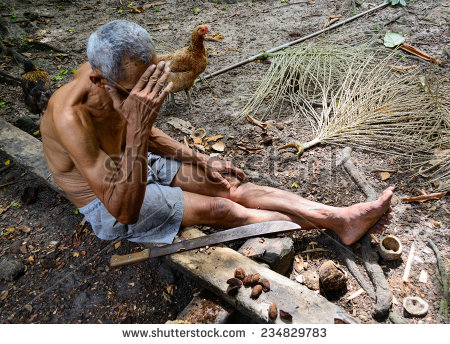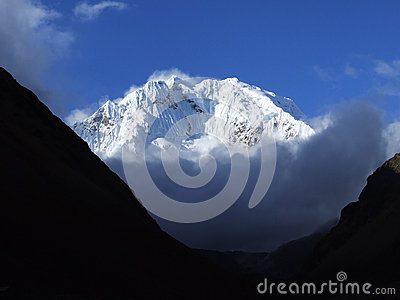Pakistan - My Way to K2
Day 1: For starters, we got stuck at Dubai Airport
It turned out that the information given to us at the Emirates embassy and at airlines before departure was incorrect.
The reality of life is that at the exit of the airport we were directed to the Covid-19 checkpoint despite the fact that we already have test results with yesterday's date.
The tests are done on the spot, but one needs to wait for up to 24 hours for the results and you will not be able to return to the airport without them. For us the only option is to stay at the airport for 21 hours, otherwise we could miss our flight.
We find out that there is a hotel at the airport. Hurray, we're going there happy with a quiet hope that maybe it won’t be as expensive as we expect it to be, but nevertheless our intuition does not mislead us and in the hotel they are asking $275 for a double room.
After walking around the whole airport we only have 19 hours left. After dinner in McDonald’s, only 17 hours :) Time flies.
Now we are waiting on the loungers, having already taken our place in the line to our gate :)
The required travel documents are: passports, Visas, Covid test results in English, printout from the PassTrack application, return flight ticket. Everything is still verified by phone by the airport staff.



Day 2: Flight from Dubai to Karachi
Yesterday and today blended into one day because we had as much sleep as nothing, though we managed to sleep for a few hours on deckchairs by some gate, where there was hardly anyone. However, our sleep was interrupted at four in the morning by the muezzin singing in the loudspeakers. The song started with Allah Akbar, then the verses of the Koran were sung, and the way of chanting made us move for a moment to the world of the fairytale of Scheherazade.
We keep falling asleep and waking up all night until 8 in the morning, but the McDonald's meal and coffee put us on our feet and we quickly return to the world of the living. McDonald's is one of the cheapest options at the airport, and yet I can still boast of my horror receipt for a Big Mac meal! Unfortunately, it won’t be cheaper anywhere else, so we already know where we will go for dinner today.
The airport is huge. It is one of the largest in the world and is heavily depopulated due to the pandemic. Many attractions, such as some SPA salons or numerous fountains, are closed, and in the Food Village, where most of the restaurants are located, apart from us, there are only 3 other people. Bored shop, massage parlor and SPA staff stand at the entrances and wait for anyone willing to enter.
There is also a mosque and several places of prayer at the airport, where those in need of contact with Allah freely kneel on their rugs and pray towards the Mecca. What an unusual sight this is for a European!




Our plane departs from another terminal, so after dinner, paying millions of coins again, we follow the signs to Terminal 2. It turns out that the matter is not that simple, because we walk for about half an hour only to reach the exit, from where it’s another twenty minutes by bus to our terminal, so it takes about an hour to change terminals without rushing.
Fortunately, this terminal is small and we quickly get to the departure hall, full of Pakistani people who are already culturally different. This especially applies to women who are covered with hijabs so fully that you cannot even see their eyes, and God forbid even the smallest parts of their bodies. Ladies begin to feel very uncomfortable at the sight of us, so to let them relax, we sit down and try not to even look in their direction. However, we do not know how to behave and we start to realize that our trip will certainly sometimes be full of similar situations, when we may not know how to behave so we don’t offend anyone.
Upon entering the gate, the staff meticulously checks once again the results of our Covid tests, which must be in English or Arabic and, in addition, must be performed by an airline-authorized laboratory, the list of which is available on the carrier's website.
Our flight takes about two and a half hours, and during the flight, I make friends with a Pakistani man from the Karachi area sitting next to me, who, it turns out, works for the United Nations. For several years he has been working on a mission in Syria at food distribution for the Syrians. Previously, he worked for ten years on a mission in Ethiopia. He tells very interesting and sometimes very unsettling things, such as, for example, that not all of Syria is engulfed in war. He lives in a big city in a modern, five-star hotel, where his office is also located. My travel companion talks about Syria as the battlefield of World powers, each willing get their hands on the country’s natural resources. The average Syrian, although always smiling and welcoming, earns $10 a month (!) and has a weekly limit of 25 liters of gasoline. Oil deposits through the Kurds are controlled by the US, and the Syrians have to import oil for themselves!
My new friend also tells me a lot about Pakistani kindness and hospitality, and that the country suffers a lot from negative western propaganda. The country is developing, education there is improving. In cities women begin to perform various important social functions and are respected by their husbands, and fortunately beating them is no longer socially acceptable. The biggest problem is still in the provinces, in villages where people still lack education and cultivate their religious traditions. There, houses are still divided into a male part and a female part, and negative things also happen, because of which the reputation of the whole country suffers.
I also decide to ask him directly how we should treat women so that they don't feel uncomfortable. So, you can look at a woman, but do not stare at her. You can approach her and ask, for example, for directions, but you should not speak to them for the sake of satisfying your own curiosity. Pretty much no woman will allow to be photographed, even if we ask her for permission, she will almost always say "no". Men, on the other hand, will be very willing to agree for taking pictures of them if we first ask. I hope that thanks to these tips it will be a little easier and more comfortable for us to discover this exotic country.
When we land in Karachi after 10 pm it is already dark. The airport itself is small and one can see that it’s poor. At the beginning, we are directed for instant PCR tests, during which the men drill through the nose all the way to the cerebrospinal fluid. Interestingly, in modern Dubai, you need to wait up to 24 hours for the results, and here you get the results on the spot within two minutes. So are these tests credible at all, or is it just art for the sake of art ...?
The next step is to measure the temperature, fill in the entrance declarations, and then we get directed to the Visa window, where we have to show the customs officer the printed Visa promise (even though it’s an e-Visa). One of my colleagues, unable to find his printed Visa, had to pay the customs officer a $10 bribe, which he ostentatiously demanded several times saying that he would help us, but we have to help him and by making finger gestures that he wants money, in the end asking us to put money in the passport. Seeing the amount, he was a bit disappointed, but he stamped our Visas into our passports and without making any problems he let us go throught the priority queue.
At the luggage belt, one of the airport employees also openly asked for a "tip" for the mere removal of the luggage from the belt, which he himself took off before the passengers even had a chance to reach the belt.
Finally we manage to leave the airport and the first thing that hits us it the wave of heat. Supposedly it’s 31 degree now, at night and it’s cooler than usual due to the recent rainfall for a few days.


The driver appointed by our trekking agency who doesn't speak any English is already waiting and at first glance scares us a bit, but turns out to be okay.
The drive from the airport is dodgy. At the first crossing only millimeters separate us from an iccident, but by honking and blinking the lights every now and then our driver makes his way very effectively.
Finally, after about fifteen minutes of driving, we arrive at our hotel in a 16-million Karachi, where we get air-conditioned rooms and can take the desired cool shower.
Time to go to sleep as we have breakfast at 6:15 am and at 6:30 we need to leave for the airport for our flight to Lahore, where we will spend the whole day tomorrow.



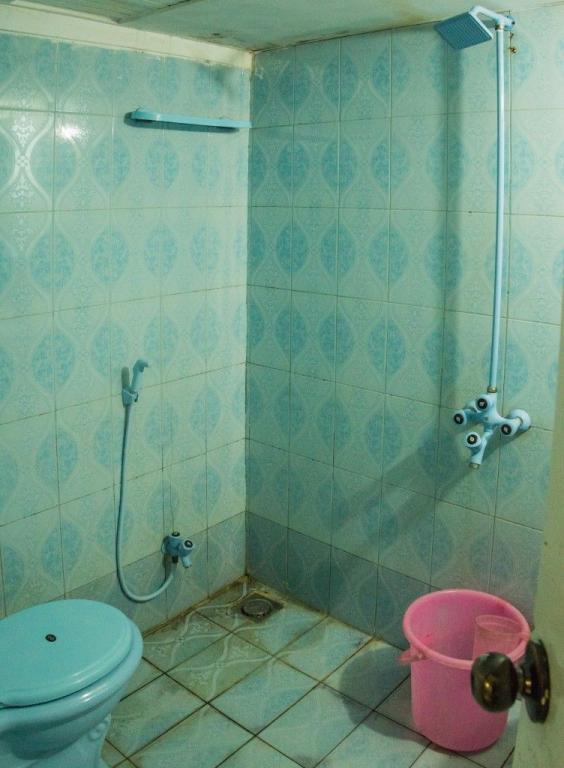

Day 3: Lahore
Today, after just a few hours of sleep, which is starting to become the norm, we get up at quarter to six. A very shy young hotel boy brings us some mini-breakfast, avoiding eye contact with our female friend from the group all the time. He was clearly embarrassed looking down at the floor, asking me if she needed something, and when she responded, he was asking me to repeat to him what she said.
Our breakfast is an omelette made of maybe two eggs, two toasts, one tiny butter, jam and tea with milk. If there were no two cups and two small spoons, you might think this was a one-person portion.
Speaking about the hotel room... Probably every room has a prayer rug, a hair brush, flip-flops and an arrow on the wall pointing to Mecca showing the direction you should pray. In some hotels you can also find the Koran in the room.
We leave the hotel punctually at 6:30 and, interestingly, the staff took a large backpack from me, but our female friend had to carry her backpack alone, which was a big surprise for us, as was the security guard standing on the street with a shotgun, chasing away hungry homeless dogs.
We go to the airport with our car trunk open, because the lock is broken. After a quick check-in, we are in the departure hall, where we have to wait two hours, because our flight is delayed. The luggage control means you put all the luggage on a big pile on top of other bags on the belt and it goes to the other side of the scanner, while the officer looks in another direction and talks to his colleague.
The flight to Lahore with Pakistan Airlines takes just over an hour and goes smoothly. The only drawback is that we literally have a refrigerator in the plane. Therefore, it is worth taking some warm socks and a fleece not to freeze during the flight.



We arrive in Lahore before noon. Our driver, hired by a trekking agency, picks us up and takes us to the hotel. It is already 36°C and we feel like in a soup. On the way to the hotel we are constantly surprised by goats and sheep on the streets, and sometimes even in Tuk-Tuks. On the roads there are not only the above-mentioned animals, but also cows, horses and even camels.







We have a driver at our disposal for the whole day, and we start our tour from the Badshahi Mosque, also known as the Imperial Mosque, which is part of one complex with the Lahore Fort. When we get out of our air-conditioned car, the heat is already pouring from the sky, the concrete floor and the tiles of the mosque are almost red hot, burning our bare feet (one is not allowed to enter the mosque in shoes and should wash the feet in a hall with very low-mounted showers, where I made a few pirouettes on the wet and very slippery floor).
On the way to the entrance we had to run away from Pakistani toursits visiting the mosque, for whom we were probably a bigger attraction than the mosque itself, and every second one of them wanted to take pictures with us. Feeling like celebrities attacked by paparazzi, we ran to the side entrance avoiding our intrusive fans.
As I mentioned before, the mosque is connected to the Lahore Fort. When we get to the fort, the heat is quite unbearable and after fifteen minutes we decide to go back to our car, where we only start to feel the cool air from air conditioning after about an hour.

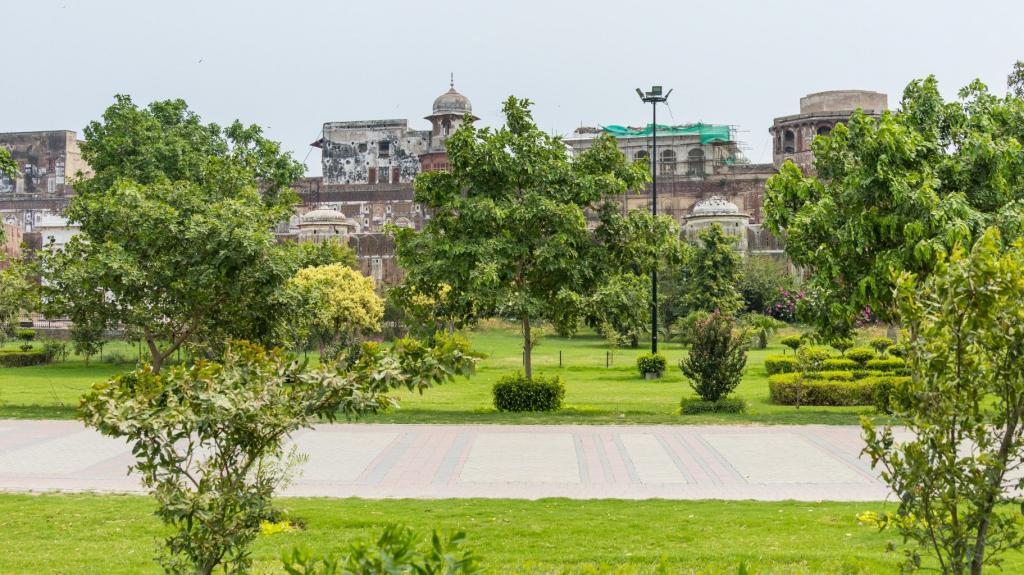













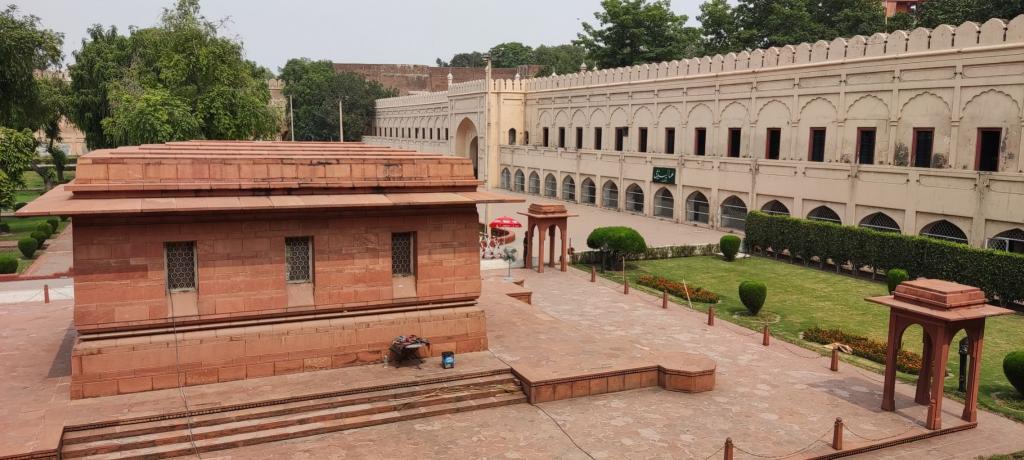








It takes us about forty minutes by car to get to the Indian border in Wagah. There is a daily ceremonial change of guard around 4:30 PM. While driving, fatigue begins to take its toll on us and our heads keep going down from exhaustion. While waiting for the ceremony, it turns out that the border has been closed for a few days and on these days the ceremony will not take place, so we have no choice and go back to the city.






So we go to the market, which looks a bit like Thamel in Kathmandu, or rather much more crowded Pahar Ganj in India, where you can buy almost anything. It is swarming with inciting sellers, motorbikes, rickshaws, goats, sheep and, of course, crowds of customers. We try a few local dishes from the street, the names of which, unfortunately, I could not even remember.








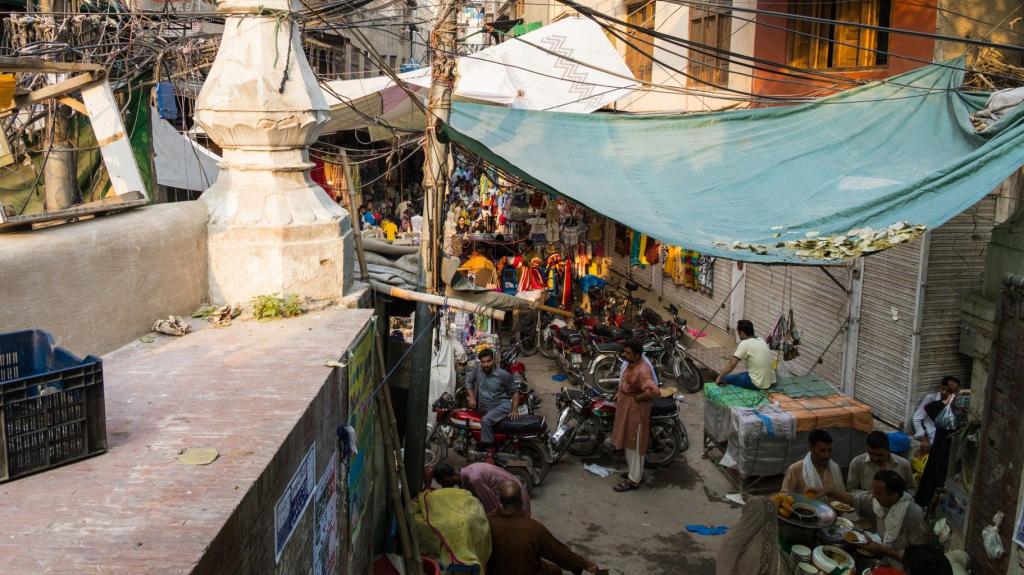





From there, very tired, we return to our hotel, where one of the reception staff with tears in his eyes says: “Thank you for coming here. Show the World our country and tell them that we are not the bad ones!" And the truth is that so far people here have been very kind and hospitable to us. They are as curious about us as we are about them, but there are no tourists here at all. We only met a few western people here.
Day 4: Bus to Islamabad, cancelled flight to Skardu and Drive through the Death Road
Today I’ve had some small technical issues with my Facebook... Take a look at the photo below :)
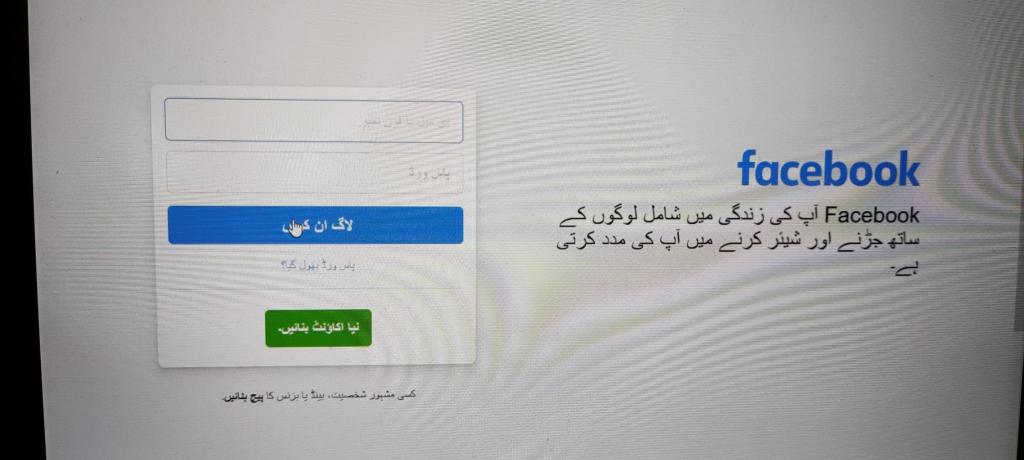
We start the day with a classic breakfast of spicy chickpeas, omelette, one toast with butter and jam, and tea with milk. If we want black tea, we have to explicitly ask for it, otherwise we will get it with milk. Coffee is usually not served at all.
We are in Islamabad after approximately five hours by public bus. Public transport here surprisingly works quite well. The only issue is that it’s a little hard to sit on the chairs in foil, but maybe they are just new and nobody has thought to unwrap it. Every now and then we slide down towards the floor.


In Islamabad we are picked up by Abbas, my contact from the trekking agency. So far we have had a lot of problems with communication as hardly anyone here speaks English, but Abbas has good English and it is now easier for us to communicate. It’s a pity not many people here speak English, because we are very curious about the local people and, as you can see, they are also curious about us.
Abbas tells us that an hour ago they canceled our flight to Skardu, so we have over twenty hours of driving through the Karakorum Highway, one of the most dangerous roads in the World. We wait at the hotel while Abbas arranges our new transport. We are due to leave in about two hours.



While waiting for the departure, we discuss with Abbas the minimum expected tips and how many people will accompany our four people group. There will be: a guide, assistant guide, cook, helper and ... about 32 porters! About ten porters will leave during the trek, and about twenty will stay with us until the end.
We leave around 6pm and drive all night through various decorated, bustling and jammed towns all night long. This is because of the Eid Mubarak Muslim holiday that officially begins the day after tomorrow. The whole country is already in a holiday mood, some stores are closed and restaurants are open until very late.







Eid Mubrarak is a Thanksgiving Day. It is a day of joy, prayer, mutual reconciliation and thanksgiving to God for the fasting experience and the forgiveness of sins. On this day, Muslims visit each other, greet and give gifts to each other.
Now the restaurants are open non-stop, so we decide to have a huge dinner around midnight. We spent most of the day traveling and there was no time or desire for food before, so our stomachs now start to ask for it. We order the Pakistani version of Chicken Korma, which tastes completely different from the Indian version, and our biggest culinary discovery is a dish called Chicken Handi - something delicious! On top of that we get Naan and Roti breads and a salad of raw tomatoes, cucumbers and onions.
During the meal, we talk to the driver’s assistant (here everyone seems to have an assistant), who is going with us to Chilas, where we will change to another car, another driver, and another assistant. The boy is only 19 and works part-time with tourists, taking care of their needs en route. This is due to the fact that most Pakistanis speak little or no English, so communication is very difficult, sometimes impossible, even on a basic level.
He tells us that he has just finished 10th grade. This means that he is in college and has one more year left to study. Afterwards he wants to study architecture. We ask him if he has a family – a wife or a girlfriend, but he tells us that dating a girl in Pakistan is not culturally recognized for cultural reasons. If a boy meets a girl, they can only maintain friendly relations, and if he is interested in her, he needs to go to his parents, who must go to her parents and ask for permission to date her and to arrange the wedding. Only after the wedding, the couple can be together.


After this interesting conversation, we continue our route and soon we get stopped at the police or army checkpoint (we are not sure what this service is). There are many such checkpoints in Pakistan where you have to sign in. We are approached by two men in uniforms, who, putting their heads through the windows of our car, start a polite conversation with us, asking where we are from, what we want to see, how we like Pakistan and what we think about the Pakistanis.
Younger, maybe twenty-something, progressive and friendly, and the other – older, with a long beard, who worries us a bit, and it turns out our intuition was right, because he starts asking us uncomfortable questions whether we like Muslims and whether we want to become Muslims. We have nothing against Muslims, because we have known for a long time that Islam is a religion of peace and love, as we get convinced by all the Muslims we met before. This is true because we have never experienced anything bad from any of them. It is also written in the Quran, some of which we have made the effort to read.
The officer, however, does not give up and because we do not want to directly answer whether we want to become Muslims, repeats this question three times. It is difficult to say yes or no to such questions, because any answer may be taken wrongly, so we evasively reply that we have read the Holy Quran and tell him that we believe Islam is a religion of love and that we want to get to know it more deeply before making such a decision. Seeing the awkward situation, the junior officer says something in a strong tone to the other guy so he leaves us in peace and doesn’t come back.
The situation was a bit scary. Fortunately, everything ended well.
Somehow we manage to fall asleep, but our driver, due to stomach problems, often keeps stopping for the so-called “number two”. At four in the morning he stops near a small roadside shrine, of which there are many, and begins to pray along with the muezzin singing from the loudspeakers. After about fifteen minutes he comes back to the car and we hit the road.
Day 5: Karakorum Highway – continued
As we stop for a moment at the Babusar Top Pass we immediately realize that something is wrong, because after a short walk we feel that it is more difficult to breathe and we feel pressure on the frontal lobe. We find out that we are at the altitude of 4175 m. It's a natural body reaction for getting to that altitude too quickly without acclimatization. After a while, we get back into the car and descend a lot, feeling the clogging of the ears due to the pressure change. The pressure on the plastic bottles sucks them in as if there was a vacuum inside.





After a total of ten hours of driving, we reach Chilas, where we change from the bus to the 4x4 and enter the Karakoram Highway, also known as the Death Road, because it is one of the most dangerous roads in the world. Unfortunately, this is the only land road connecting Islamabad with Skardu, and due to the canceled flight, we have no other option than to take this unexpected detour.
We drive almost all the time on gravel and bumpy roads, also in the mountains, where the road is getting narrower and keeps winding.



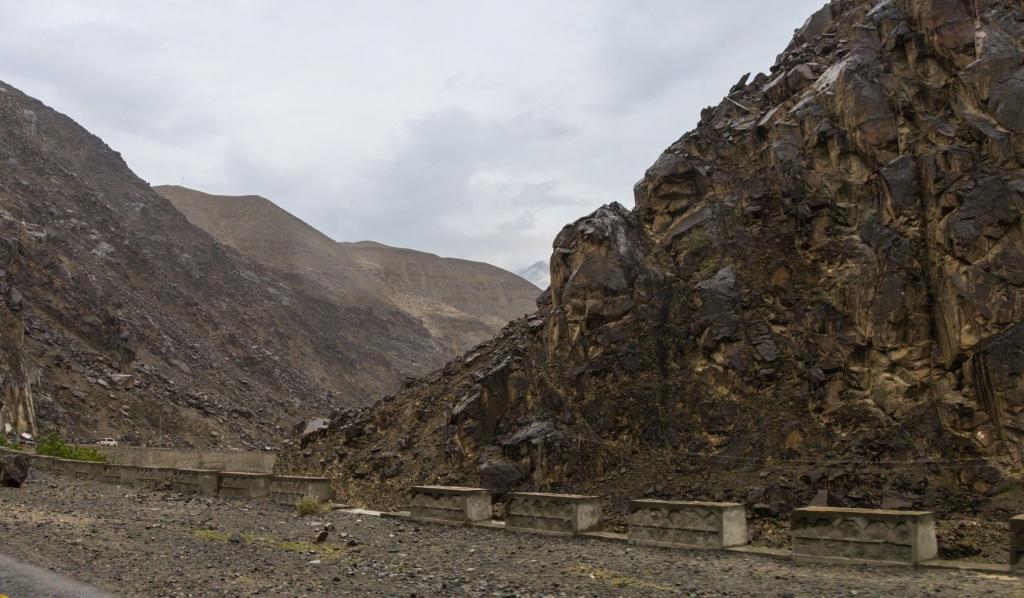




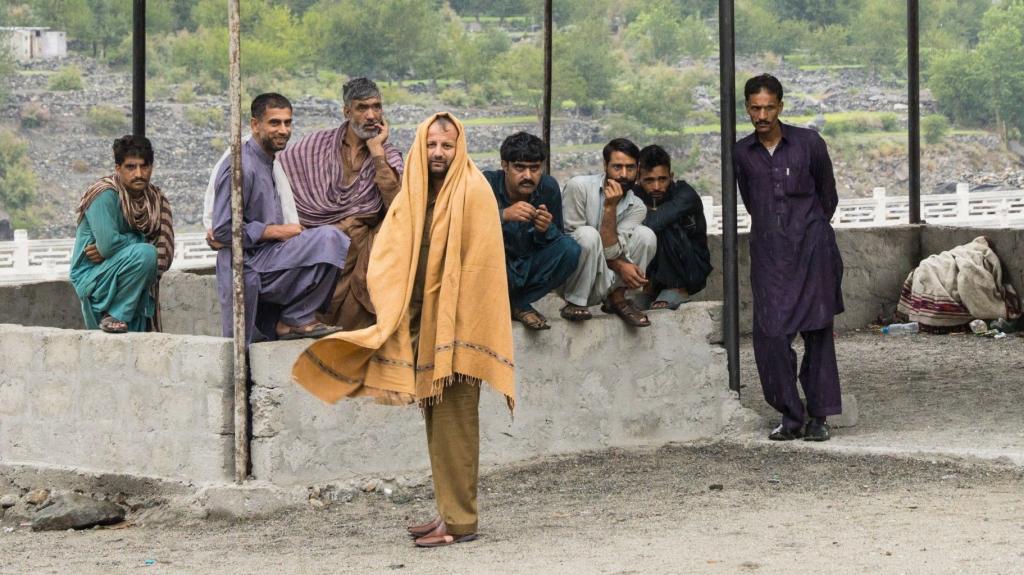







On one side of the road there is a rock with falling stones, sometimes even huge ones, which, if they hit the roof, would kill everyone in the car. On the other side, there is a cliff. The roads get narrower. Passing incoming trucks every time puts us in risk of falling down, in some places even several hundred meters.
Our driver, probably a rally driver by profession, has no problem with it and overtakes the trucks with ease. He sometimes gasps a lot after, probably as a sign of relief, but he makes an impression that he knows exactly what he is doing. While driving, he observes the rocks in front of us all the time and assesses whether the passage is safe.













At some point, about a hundred meters ahead of us, up on the rock clouds of dust begin to appear and stones begin to fall on the road in just front of us. One of them could easily weigh 50 kgs and could probably fall inside our car with the roof. It has been the most stressful moment of our trip so far.
Huge overhanging rock above us adds to the dramatism of this journey. This narrow road was at one point even blocked by a huge truck lying on its side.


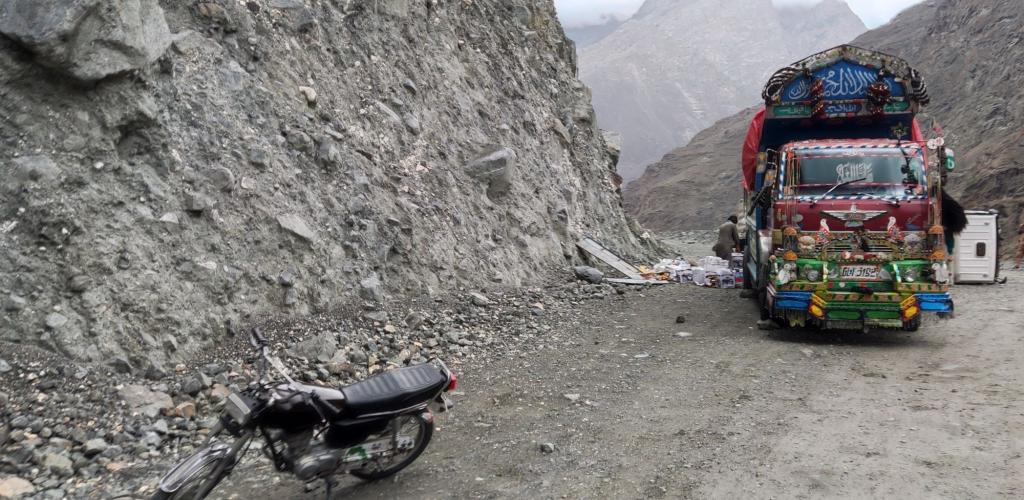
Finally, after twenty hours we reach Skardu, where we check in at our hotel and meet our trekking guide, who collects our passports and needs to rush to the military checkpoint, because the army refused to give us trekking permits. The reason was that the originals of our passports are required.







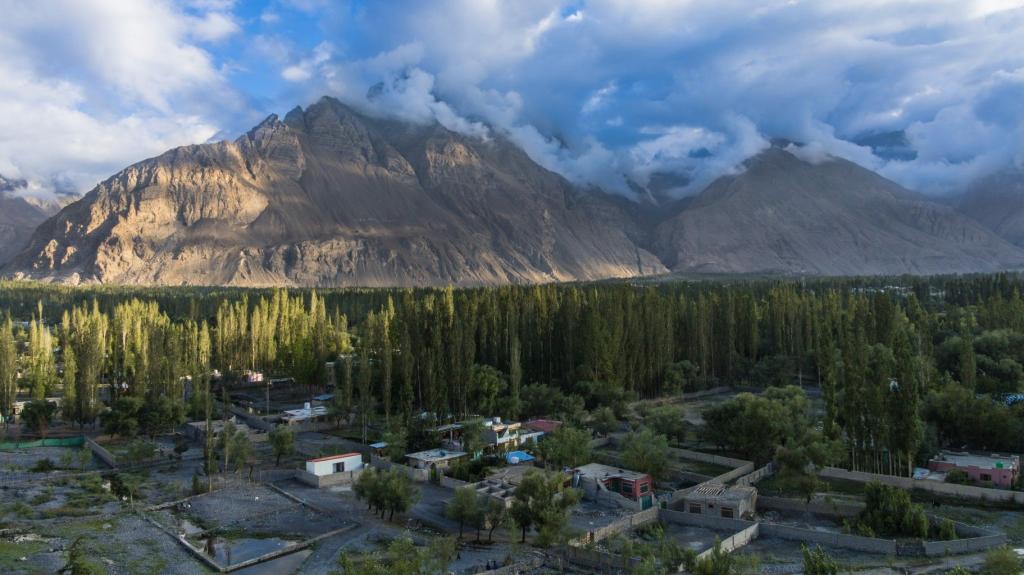


We arrived much later than we planned, actually late afternoon instead of early morning and everyone is already celebrating the holidays, so nobody is in a hurry and maybe we will get our permits tomorrow, which would delay our trek by one day and we would have to cut out the rest day after the hardest part of the trek, when we expect to be exhausted. We'll find out about the army’s decision late tonight, possibly around midnight.
We go for a short walk around the city and try to buy K2 fridge magnets, but it’s impossible to get them anywhere here. We are told that we can get them somewhere in Islamabad or we can order them on Ali Express :)
While taking photos and filming the city, all men and children, seeing the camera vividly react and smile, stop to talk to us, ask for photos and pose happily in front of the camera. The people here are very friendly and genuinely interested in getting to know us.
After these few days spent in this country, I consider Pakistan to be one of my greatest travel discoveries. Few countries are as authentic as this one.










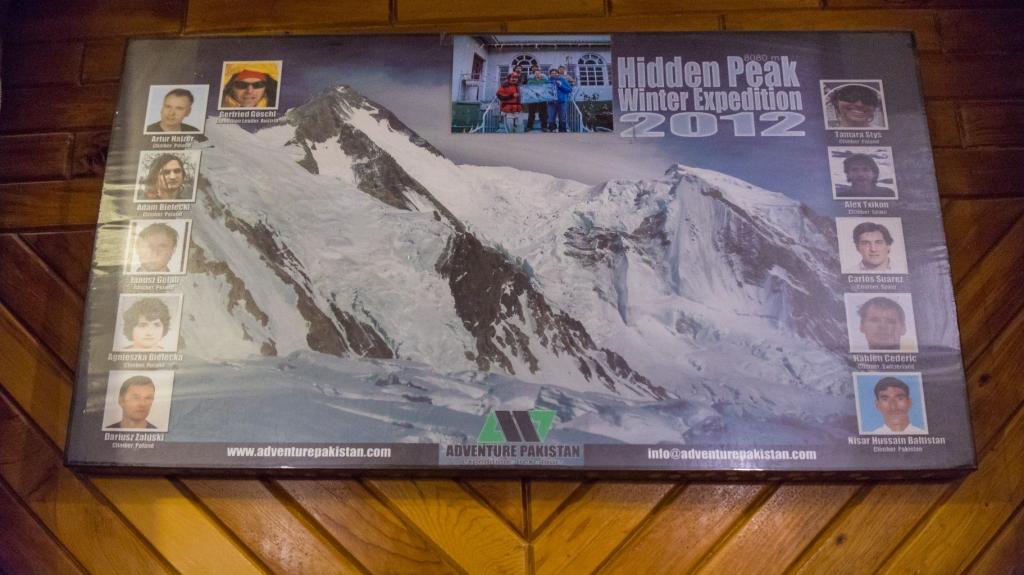
In the evening we receive information that our permits are ready, so we will need to wake up after five in the morning and leave for Jhola around 6:30. We have another ten hours of driving and the last moments of contact with the World, because on the way to Jhola, beyond Askole, the mobile networks coverage ends and we will get coverage again after a week near Concordia, where a GSM transmitter was supposed to be built this year.
And this is the view, with the sound, from our hotel window in the evening...
Day 6: Drive to Jhola (3300m)
We set off a little after seven in the morning, straight after breakfast. We have a ten-hour drive to Jhola, from where we will need to walk another hour and a half to our first camp, so that on the next day we can walk four hours instead of five and a half.
The weather worsens and eventually starts to rain as we enter mountain areas, partly occupied by the army. These are the border areas, and there used to be a lot of Taliban hiding in the caves here, hence so many troops are now here. There are many signs prohibiting taking photos not to expose these army camps.
Several times we have to drive through old wooden bridges that groan under our weight, and an additional attraction is the cross the river and through the wet ruts over the precipices.
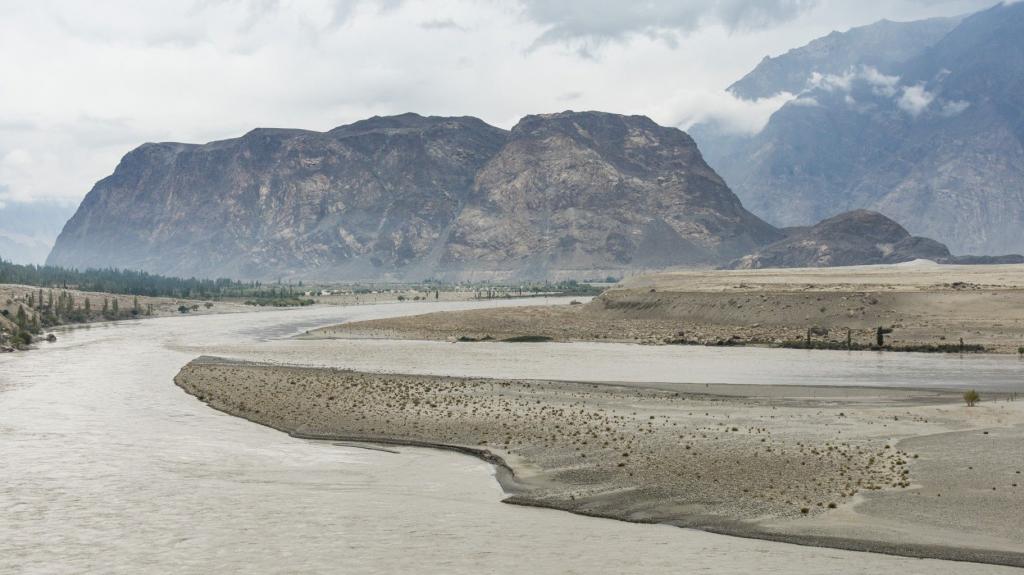

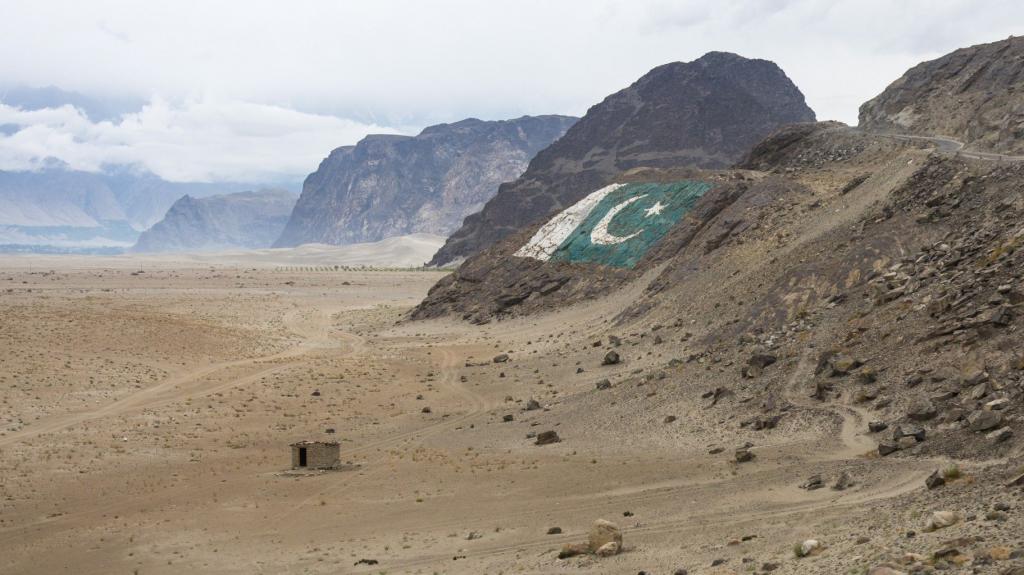









We stop at Askole for food. I am already green from driving on bumps and bends and I am not able to eat or say anything not to vomit. In Askole we buy goats, chickens and donkeys, which we eat on the way (apart from donkeys), so we try not to make eye contact with them.


On the way from Askole to Jhola we need to register at the police checkpoint and after less than an hour we are in Jhola. Unfortunately, it’s raining and that’s why the driver is trying to take us over the rocks falling into the pit. Fortunately, we manage to reach the place without falling down, and we only have a few dozen meters to the camp on foot.



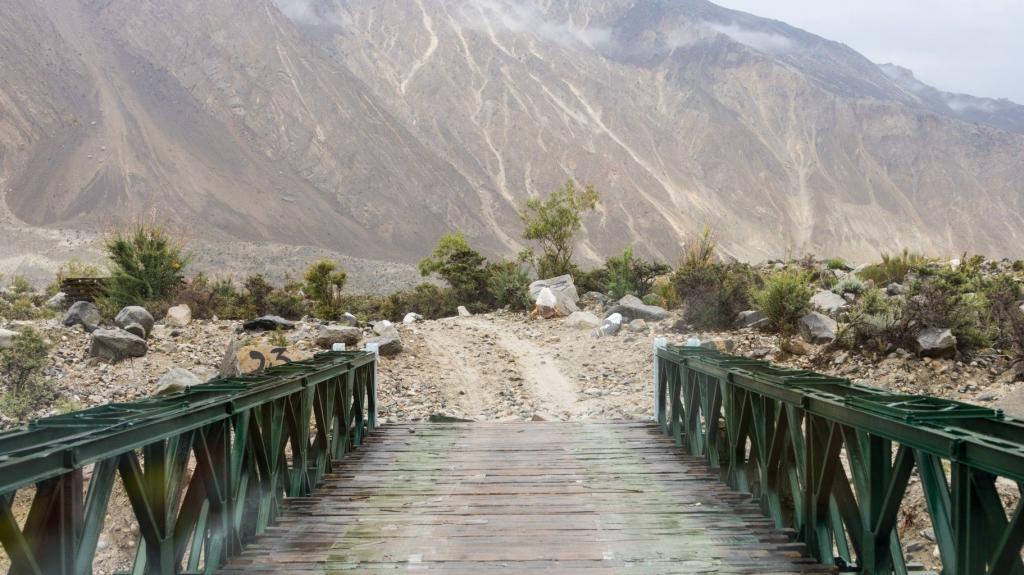











We already feel the air is thinner, some people have headaches. Brushing the teeth takes place by the river, where others take care of their various needs right next to each other, and you have to be careful not to step into anything. The water in the river is dirty and very cold, so the only washing is done with wet wipes. At night you have to go there with the headlight and watch you feet.
The longed-for sleep after a hard journey was disturbed by the drums of the music band that arrived next to us.
Day 7: Trek to Paiju (3400m)
.jpeg)
Today we wake up before six and pack our things to ready for breakfast by 6:30, but we fail to be on time. The first day is always the hardest when it comes to organizing yourself. You have to plan what to take in a handy backpack with you, and what to give to porters in the large backpack.
The weather in Karakoram is unpredictable and can change at any time, so it’s worth to have a sunscreen, a jumper, a rain jacket and rain pants, at least two or preferably three liters of water, some candy bars (not with chololate or you will drink it) and of course a camera, because the views here are breathtaking.
We leave after eight in the morning and, according to the guide, we have four hours to reach the camp in Paiju.
During the trek, we meet a Pakistani film director from the northern region of Hunza, who goes with a group of musicians to perform a concert at Concordia (the same ones who kept us awake last night). There's a good chance we'll be at Concordia at the same time.

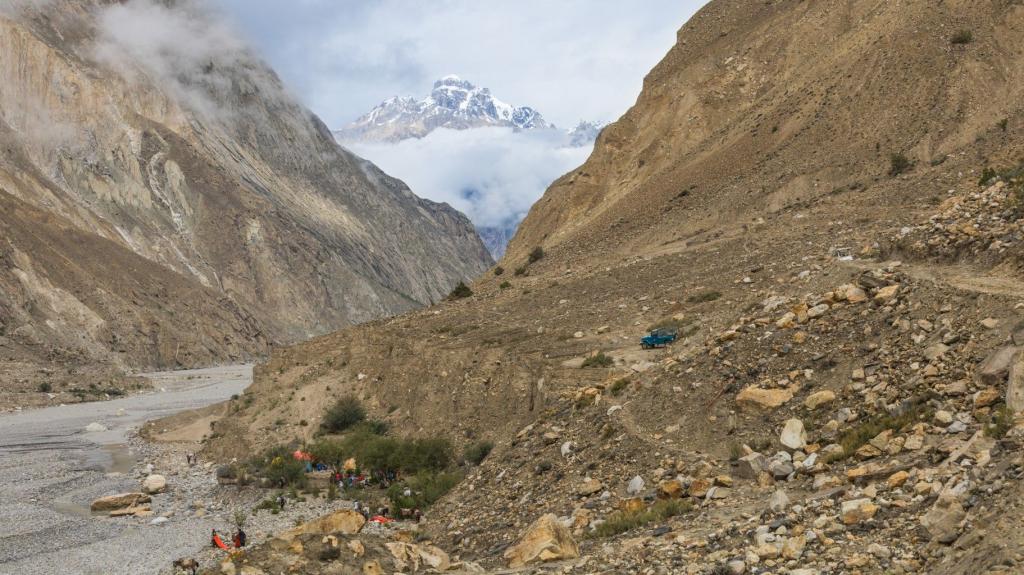

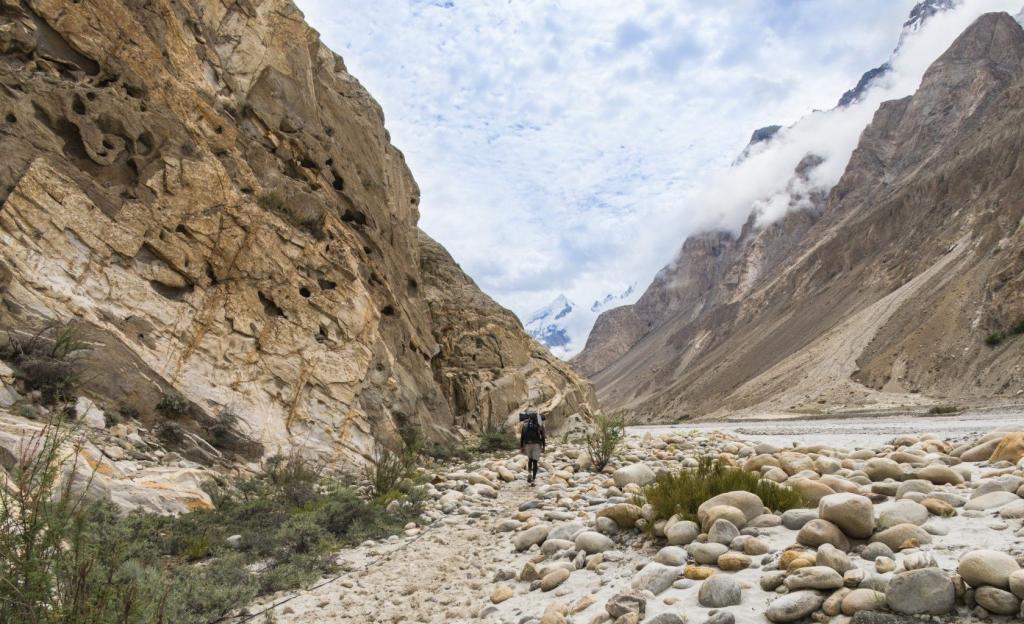























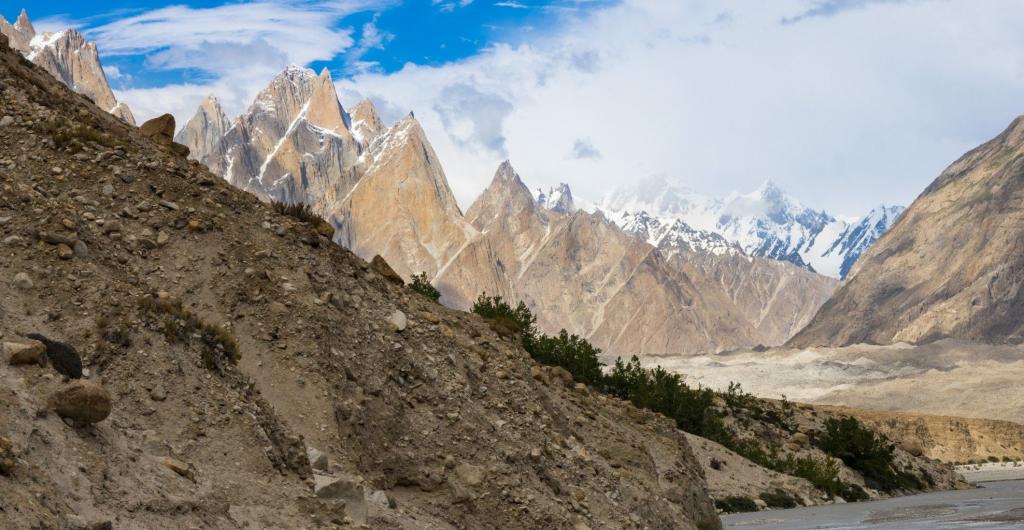




During the trek, Ghani, our guide’s assistant tells us about his contacts with the Polish climbers. It turns out that he hiked for six seasons with Tomek Mackiewicz. He tells us that Tomek was a very poor man, he did not wear any designer clothes or shoes, he always dressed in sweaters, ordinary jackets, and did not have professional climbing gear. Tomek lived and dressed like the Pakistanis, slept in Pakistani houses and ate what the local people eat. Tomek had an amazing personality and was loved by the people here. He dreamt that once he conquers Nanga Parbat and becomes famous, he will fund solar panels for the villages near Nanga Parbat so the people would have electricity.
Our guides also trekked with Reinhold Messner, who is famous here for not giving any tips, Adam Bielecki, Krzysztof Wielicki and Denis Urubko. They know most of the famous climbers who come here.
During the trek we hear the sad news that today a famous Korean climber, Mr. Kim, was killed during the summit attack on Broad Peak. It was the last eight-thousanders he had left to climb.
We also meet another team, from Russia, who failed to climb Broad Peak due to bad weather. Many people come here with great hopes and you can see the disappointment on their faces and in their eyes when they fail to realize these dreams.
In the end, it turns out that the trek takes about six hours, and the worst was the end, because we thought the camp was just a stone's throw away from the Paiju sign, but it turned out that we still had an hour to go to it. Eventually we manage to reach it after 4pm and take a refreshing shower from a cold water pipe.
Here we will have a day for acclimitization and rest.
Day 8: Acclimatization
Today we are staying in the camp for the whole day, but in order to move around a bit, we go for a four-hour walk to the Baltoro Glacier. The beginning is calm - we walk up and down the marked path, jump across the river in places, but overall it's not bad.
Then we go down the sand to the glacier and here it gets tough, because on the glacier everywhere there are stones of various sizes, which are very unstable and sometimes slide off.
The glacier looks like huge heaps of stones that you have to climb on, then walk downhill, only to see the heaps to be conquered in front of you.
After walking a bit, we decide to go back to the camp and spend the rest of the day there.
During dinner, Ghani tells us about his friendship with Tomek Mackiewicz and shows us photos from Base Camp during his unlucky trip to Nanga Parbat. We are shocked that Tom was climbing Nanga Parbat with a regular stick, wearing shoes that Ghani was repairing for him the day before the trip and wearing non-pair gloves that he found somewhere on the route and gave Tom to him.
Pakistanis emphasize that Tomek died because he did not have the appropriate equipment.


Day 9: Trek from Paiju (3400m) to Khoburtse (3800m)
We get up at half past six in the morning after an almost sleepless night, because the tent is pitched on the falling ground and we go down every now and then with our sleeping bags.
Breakfast is at six, of course a fried egg or an omelette as standard depending on the day, breakfast cereals, Naan or Ciapati cake, toast, marmalade, peanut butter, tea.
Before seven, we set off on a tour. It is still chilly and nothing foreshadows the heat pouring down from the sky to come.
The hardest part, as I mentioned yesterday, is the glacier, where we endlessly overcome successive heaps of stones. You have to be careful with every step, because the stones keep sliding and you can twist your ankle at any time.



After ten o'clock in the morning we reach the middle of the route, where we will have lunch under a hanging rock and something cold to drink. It is a Tang orange powder, which after mixing it tastes like our Vibovit. We dream at this moment and such an icy Coca-Cola.

After the picnic, we set off on the second, most difficult part of the route, and this is the main one due to the heat, which means that you have to take breaks every now and then, because it's pouring out of us incredibly. An additional problem is the lack of shade most of the way.
While walking, we hear how the glacier is working and the stones keep falling somewhere. There are also crevices in the glacier that need to be carefully avoided.




Several times we found ourselves in such landslides and we went down a bit with a patch of soil and stones, but fortunately, apart from minor abrasions, we leave it unscathed.
We reach the camp in Khoburtse (3800m) after 2 p.m. and finally we can rest and drink something cold, take a bath in an icy waterfall and make laundry that dries immediately in the sun.



Day 10: From Khoburtse (3800m) to Urdukas (4018m)
We leave the camp around 6:40 am. We are theoretically four hours away. We want to cover most of the route before the heat is on. Yesterday it was around thirty degrees and today we expect similar temperatures. Walking in such a pan is unbearable.
The hike is quite short but difficult. Right from the camp we have a steep climb several dozen meters up. Then the route goes over stones and slopes, a little up, a little down, but still more uphill.
The second half of the route is getting more difficult because we have to walk over large and unstable boulders. One of these boulders leans forward and then backwards beneath me, which luckily ends in a not very serious fall and a sore tibia.
Then it's even more interesting, because ice begins, some ice crevices, and of course more unstable rocks.
During the end, we have the opportunity to see snow-capped Broad Peak for the first time!
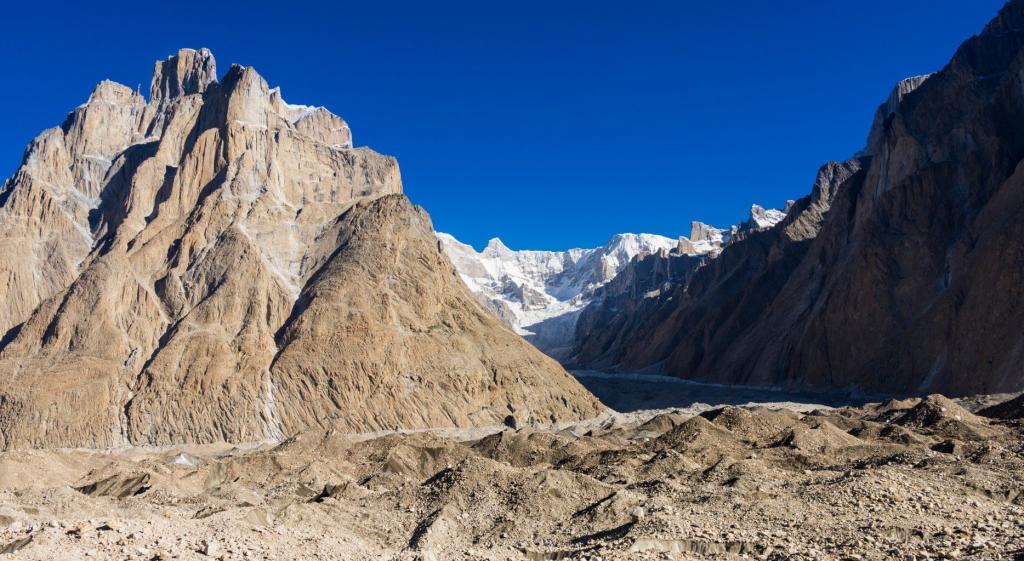




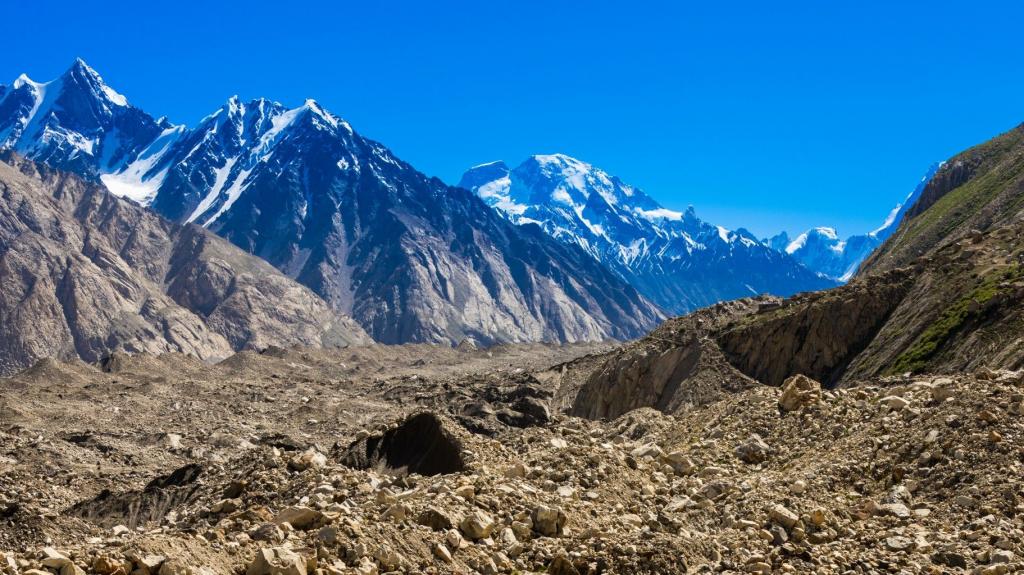

We arrive at our camp an hour early and the frying pan begins, which is getting stronger every hour, surely reaching thirty degrees. Unfortunately, there is less and less shade and we hide in our tent-mess, it is also getting hotter.
The camp is well prepared: there are wash basins and a pipe of spring water on the rock where you can wash yourself. Toilets are in sight everywhere.
We spend the rest of the day talking, playing cards, praising the chef that we only had one diarrhea after eating him, and admiring the snow-capped peaks surrounding us from all sides.
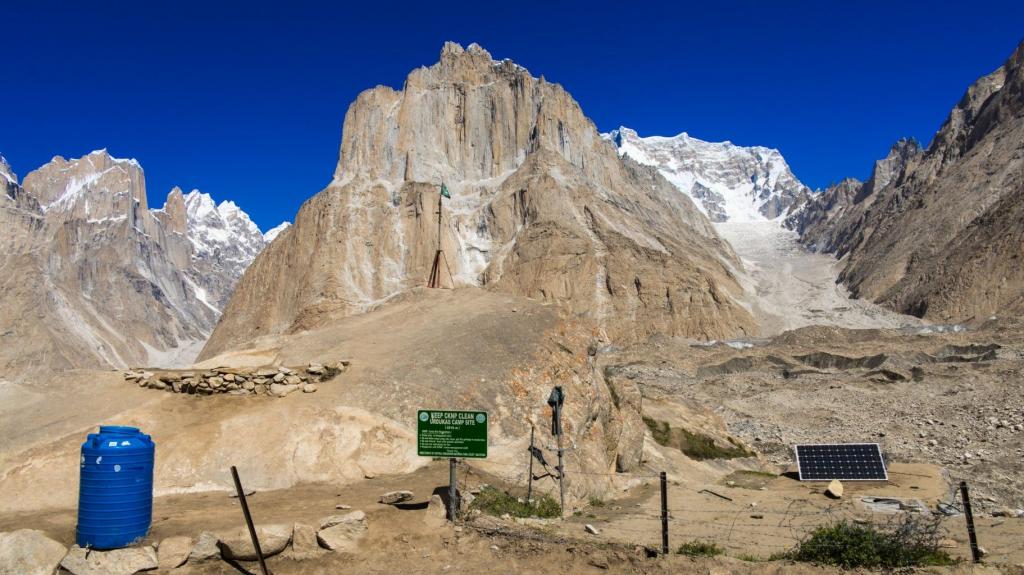



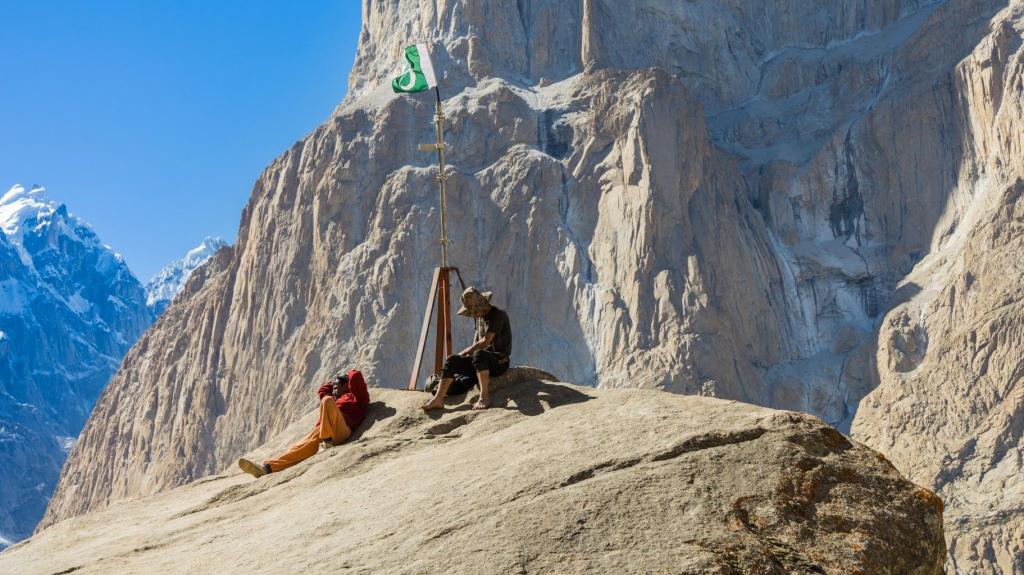











Day 11: From Urdukas (4018m) to Goro II (4300m)
We leave around 6:40 am. We plan to reach Goro II camp around 3 p.m., but thanks to a fairly quick pace, we manage to get there after 1 p.m.
The road does not differ much from the previous day, because most of the way goes again over the Baltoro glacier, i.e. through heaps of stones falling on the ice. It is a bit easier than yesterday, but the route is longer.









A little halfway through the route, we have lunch on the rocks again, where our cook Eggs Uncle quickly prepares us a chicken noodle soup, some snacks, canned fruit, tea and an icy drink on water straight from the glacier, perfect for another hot day.
Fortunately, it is a few degrees lower than yesterday and you can go.




From the camp, we have a beautiful view of the snow-capped mountains around, including Masherbrum, Gasherbrum IV and a piece of Broad Peak. To the left of Broad Peak is K2, which is currently completely obscured by other mountains.
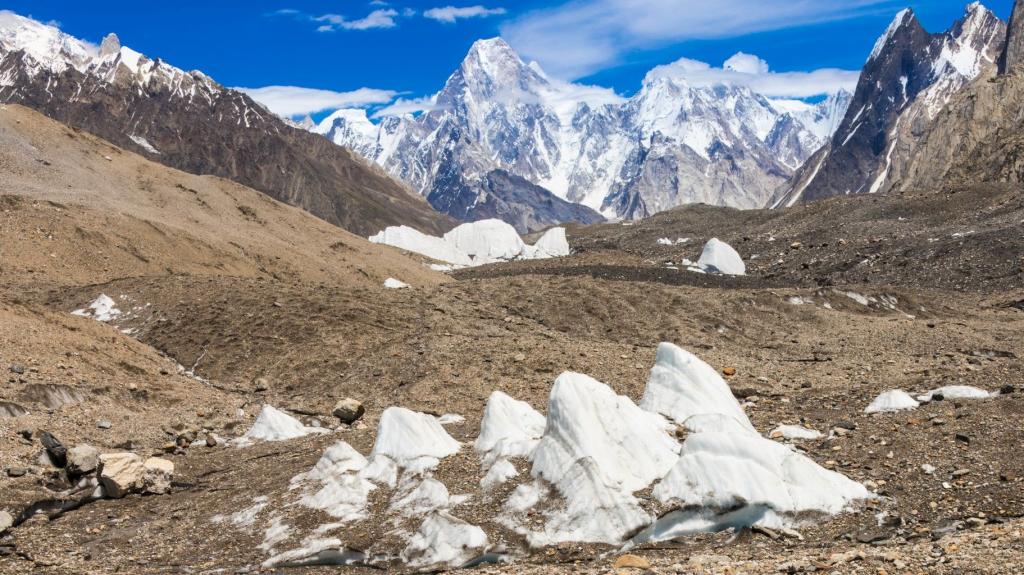



Today, for the first time since the start of the trekking, we have the Internet for a while, thanks to which we can inform our loved ones that we are still alive. This is possible thanks to the newly built GSM infrastructure in the Concordia area, but you must have a special SIM card from northern Pakistan that works in this area.
After dinner, we spend time with our Pakistani friends in their tent, discussing cultural differences.






Day 12: Concordia
As for the trekking itself, today is not much different from the previous two. We leave at seven, and walk the whole five hours along the glacier heaps reaching Concordia at noon.


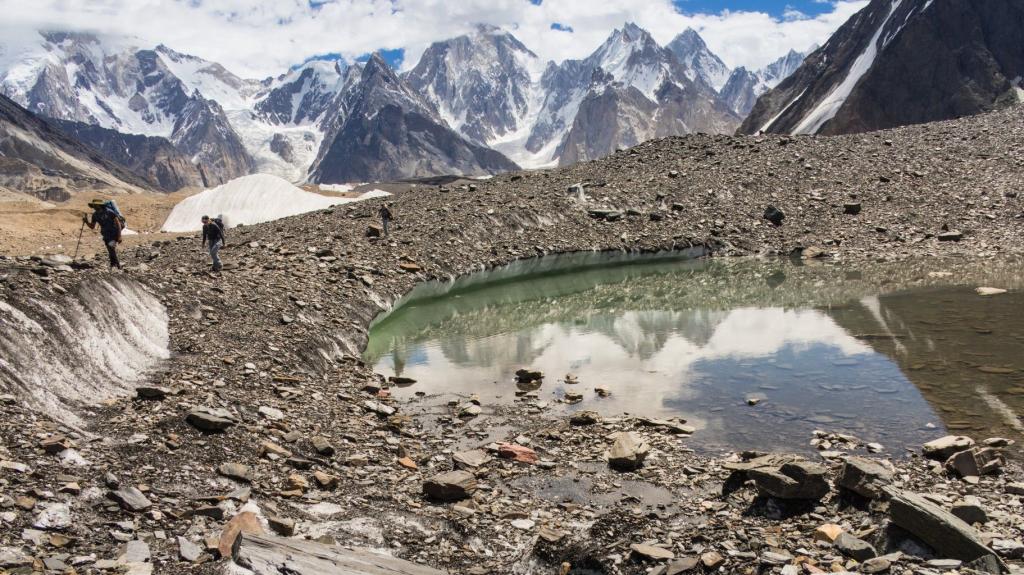
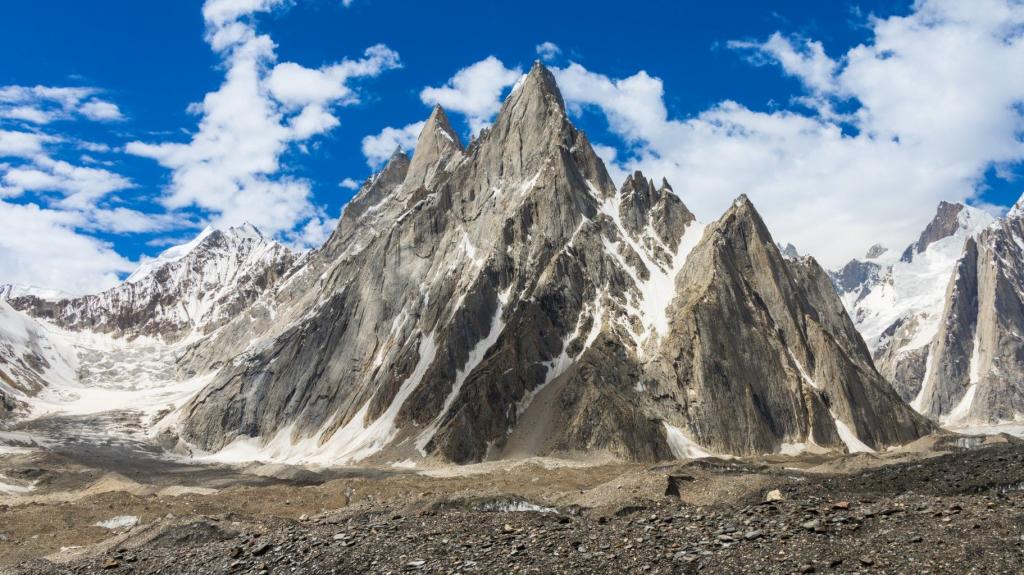

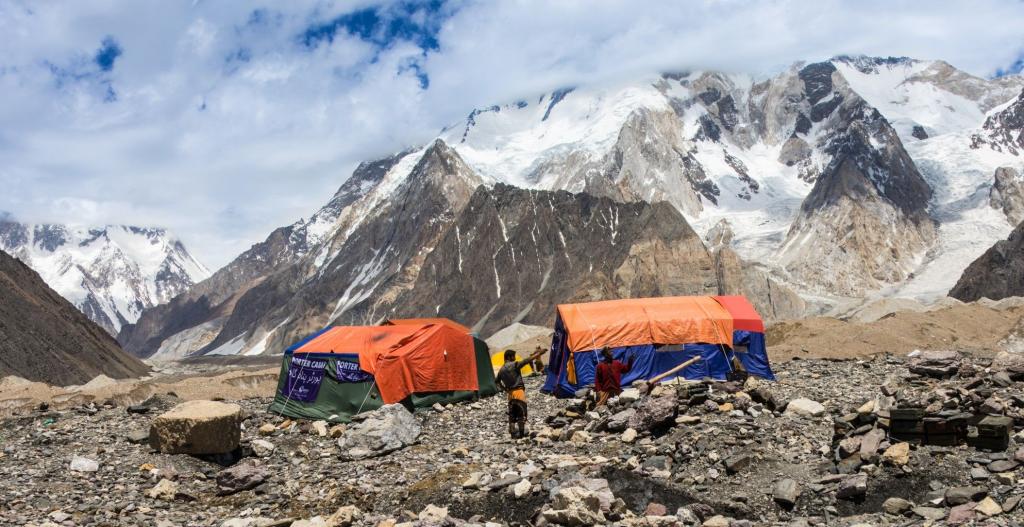
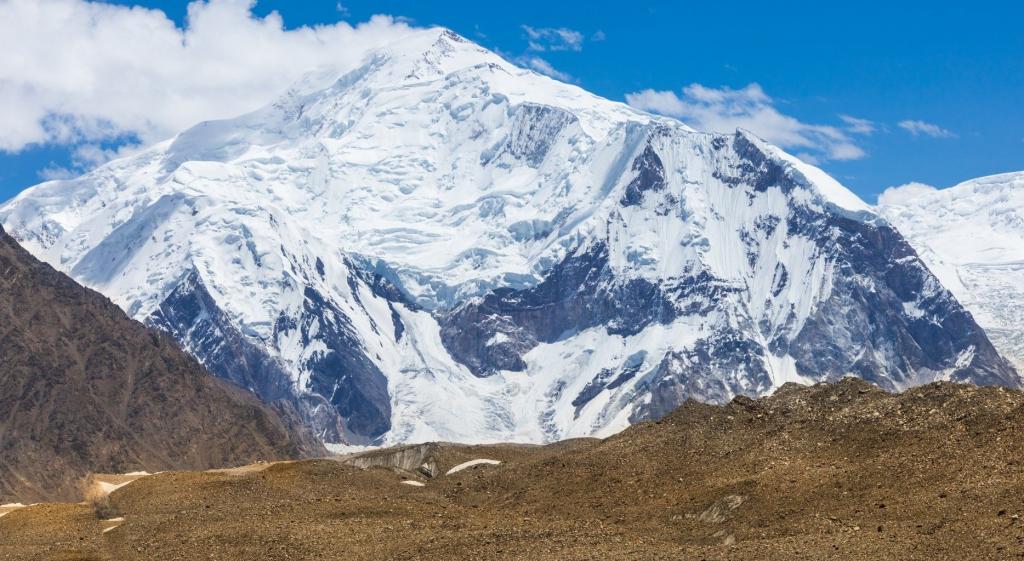

The night was already in the negative, the morning on a warm fleece and at noon probably around 25 degrees.
At the camp, we enjoy the view of K2 and Broad Peak. K2 is called by Pakistanis a capricious mountain and it has not been fully discovered by us, but we have seen the vast majority of it.
It's past eight now and it's already below zero outside. Probably around -15 degrees ahead.











Day 13: Broad Peak Base Camp and K2 Base Camp
According to the guide, we have about ten hours of trekking today, and we want to get back to our camp before dusk, so we leave at 6:40 AM.
The road is not very different from the previous days, but the bonus is a lot of ice crevices and the possibility of slipping on the ice and falling into them.
We go out with two rescuers who are to check our capabilities before the attack on Gondogoro La and we have a rescue pace right away. In an hour we go through the biggest gaps and reach the GSM transmitter, and after ten in the morning we reach Broad Peak Base Camp, where we are invited by Monika Witkowska for tea, at which she tells us about her unsuccessful attack on Broad Peak. Unfortunately, Monika had to give up after reaching 7500m. She also told us about her experiences with HAPs (High Altitude Porters), the local equivalents of sherpas. One, for example, during the summit attack, realized that his stomach hurt and that he was coming back, and another one in front of the wall started to ache and had to resign from entering.












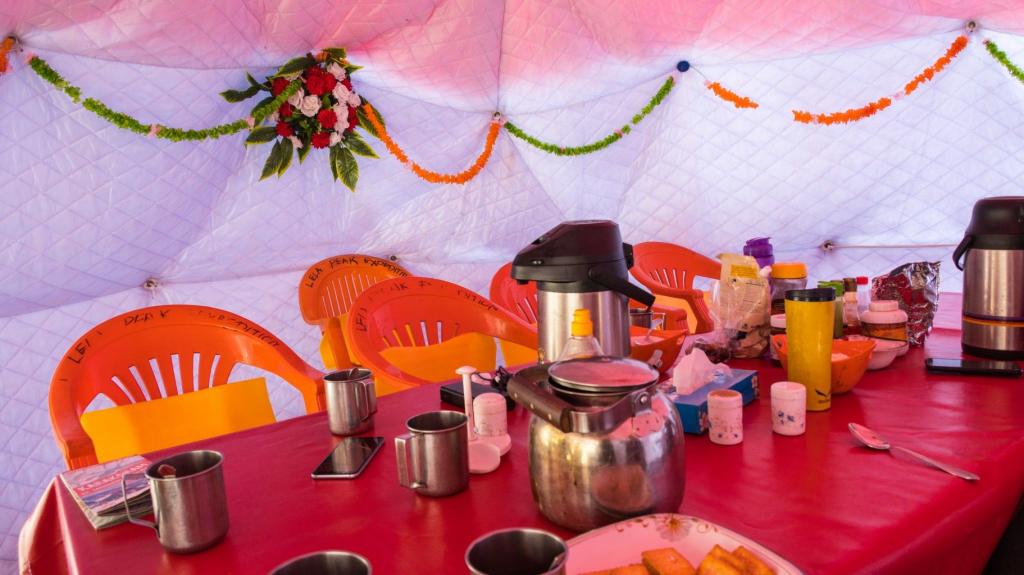
Time is running out, so after a while we go to K2 Base Camp. Unfortunately, we already know that we will not be able to see the Gilgit Monument cemetery, because according to the calculations in K2 BC we will be in the afternoon, and this is also the case.
At K2 Base Camp, I meet the Pakistani team of Samina Beck, a famous mountaineer who climbed Everest. Unfortunately, the mood in the team is minor, because they have just lost a friend who died in an avalanche during their attack on K2, and two other members of the team were taken by helicopter. Only one person from the team managed to attack the summit, and the rest had to end their climb with a defeat, because there will be no next attack this year.
Similarly with the English team, which also failed to attack.




On the way back, we visit Monika again for a moment and meet another Russian climber Vitali, who a few days ago took part in a rescue operation when a Korean climber disappeared on Broad Peak. Unfortunately, only the body was found. Vitali and his team are making a film about this mountain.


Broad Peak is not kind at the moment, because neither he nor a few other teams have managed to get it, and the season is ending and most of them will go home in the coming days.
Tired, with sore feet, when every step is already painful, after twelve hours I return to our camp.
If any of you are going to K2 Base Camp, keep in mind that the section back and forth is about 25 km, all the time on the stones. If you want to avoid time pressure, exhaustion and be sure that you reach this main point of the trip, plan a night, preferably at Broad Peak Base Camp.
The weather forecast for tomorrow is bad, so we make a decision that will affect the rest of our trekking ... Crossing the Gondogoro La Pass in the forecasted weather poses a serious risk of death while climbing. There will be a snowstorm on the approach, which would make it much more difficult for us to reach the pass, and at the very top, temperatures are announced at which it is possible to freeze in a few minutes.
Additionally, we would have to leave at midnight, climb the mountain pass within four hours and descend straight away, because after sunrise, when the sun starts warming up the mountain, the ice and snow begin to melt and huge rocks begin to fall, which would probably kill us if not we would be down on time.
Therefore, we decided to go back the same way.
Day 14: Descent to Goro II
The night was very bad because we had a strong wind in the camp. Several tents, including the Spanish crew, flew away with the people. Our mess also flew, and the kitchen did not take off just because our porters were holding the tent for two whole hours.
In the morning the whole camp looked like a mess and things were scattered far away, delaying our departure by about an hour.
The road, as usual, on stones, through ice mountains and crevices to Goro II camp, takes us five hours.






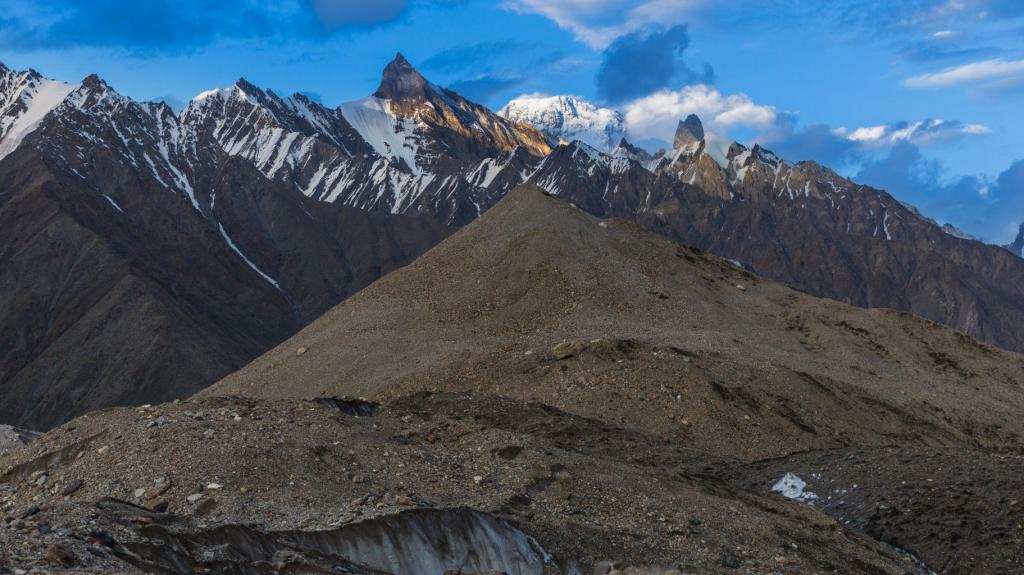



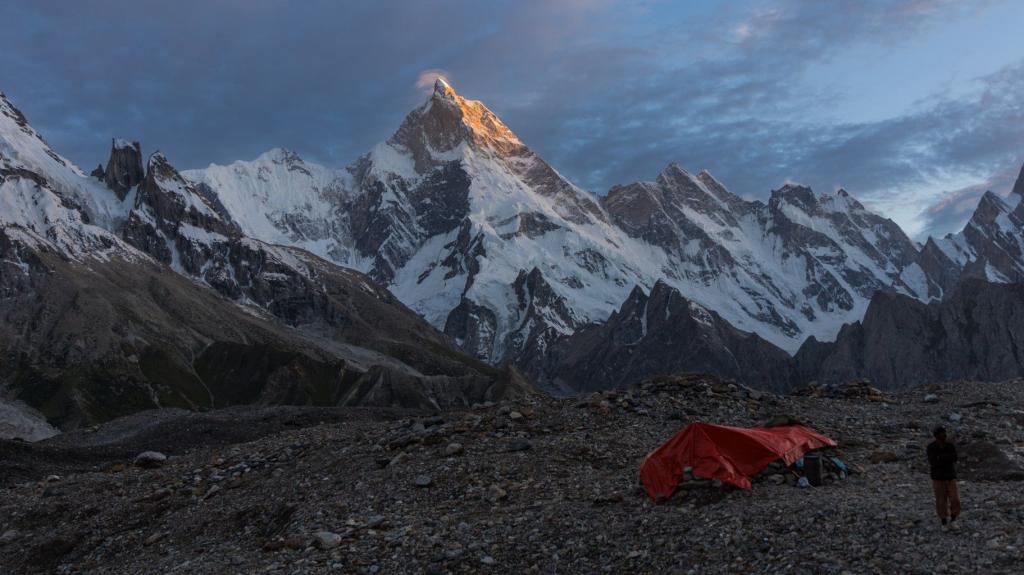
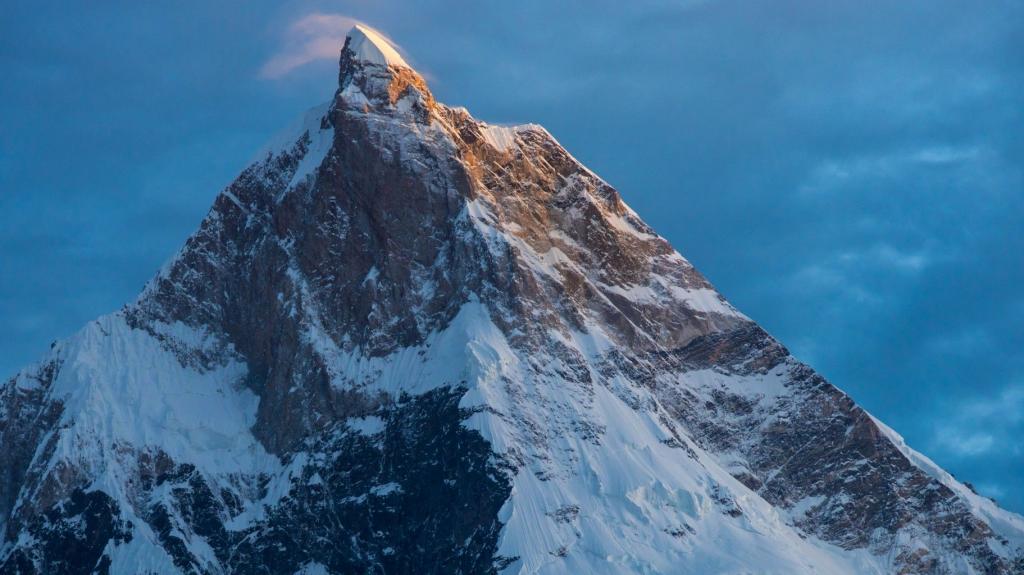
We were supposed to go on to Urdukas, but it's another five or six hours, and after yesterday's "walk" we are already very tired.
We rest all afternoon and talk to passing climbers. Again we have the opportunity to see Viltali Lazo, Anton and meet his entire film crew. They shot a documentary about climbing Broad Peak, which will be shown in cinemas in less than two years. Vitali told us about his successful attack on Nanga Parbat two years ago when, after reaching the summit, he descended thirty meters below and ski from there.
When we are here meeting and talking to various famous climbers, we hear about fatalities on K2 and Broad Peak every day. Here, death is commonplace.
Day 15: Descent to Khoburtse
In the morning it gets cloudy, so we pack rain gear and set off on the road at seven in the morning.
Halfway to Urdukas, the rain begins to fall, increasing in intensity, and the road across the glacier becomes more icy and slippery than on previous days. When we reach Urdukas at twelve (after five hours), it is already raining very heavily, and we have a break here for lunch under the cloud.




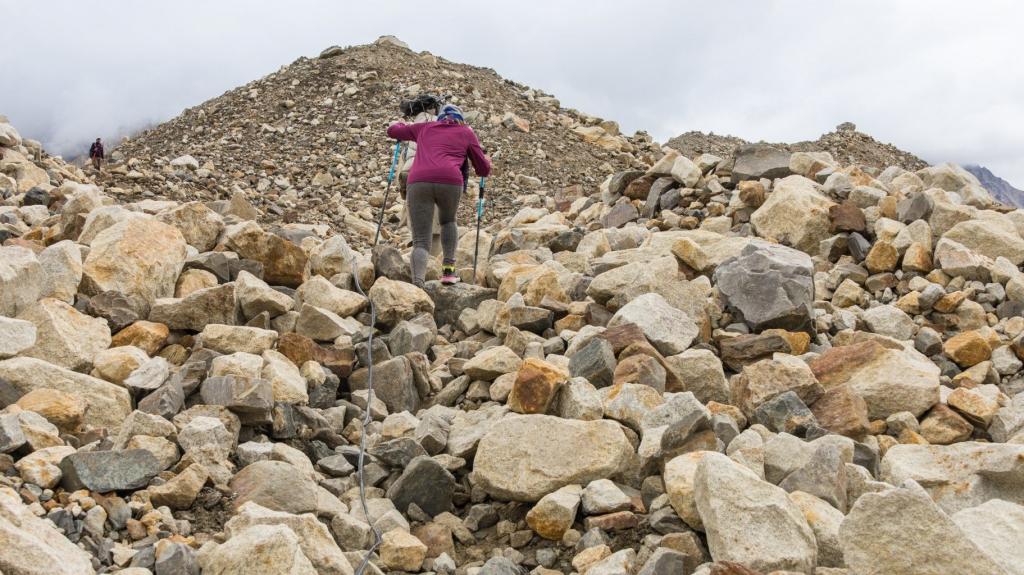

We talk to a few people on the spot who came here from the bottom and we learn that the access roads to Jhol, where we got at the beginning by Jeep, are blocked due to landslides and there is a possibility that we will have another 30 km on foot to Askola, where to be maybe our car can get there.
After lunch, we continue our trek to Khoburtse, reportedly only three kilometers from Urdukas, which in fact turns out to be eight kilometers, giving us eighteen kilometers of trekking today.


It's already raining and our raincoats can't withstand that much water anymore. In addition, the road leads sharply uphill and downhill strongly over huge stones and on slopes, where there is always a risk that some stones will slide straight onto us. The little river that we passed upwards has become a huge rushing stream that can easily take us with it, and we have to jump over it over a stone in the middle of a powerful current.
Finally, after two and a half hours, wet to the skin, we come to the camp, where it is still not completely safe, because the last time it was raining, a huge boulder fell from the mountain on the slope of which the camp is located, killing two people.
Now we're in our tents getting ready to go to sleep with all our clothes still wet. Hopefully tomorrow it will be warm and sunny.
Day 16: Strenuous Way Down to Paiju
The last downpour caused significant changes in the structure of the Baltoro Glacier, and therefore the existing roads no longer exist. Our guides and porters must plan a new glacier route.
The road is terrible! About half an hour after take-off, we walk down a steep, icy slope and an accident occurs. My leg is sliding down and I am starting to tumble down the icy slope, but Ghani and a colleague in the group react immediately and pull my hands up. Fortunately, it was not high, so maybe I would break at most;)
Then we walk on huge and unstable boulders, where you have to weigh each step so that you do not fall over or twist your ankles. We go like this for two hours climbing and descending huge heaps of stones.



Then it gets a little easier, but the ankles are already giving a hard time after the previous episode.
Even the porters complained that they lost a lot of energy on these boulders looking for the way, and our cook was found unconscious lying on the stones and he had to be led another few hours to the camp.
The end of the glacier was also difficult, because the road we used to go up was flooded and at the moment there is a big river flowing there, so we have to go around.
As a result, the whole journey takes us seven instead of five hours.
In the afternoon, another group from Poland and Russia comes to the camp.
Day 17: Fight for Life
When we get up in the morning, nothing foreshadows what is going to happen today, and a lot is going to happen.
We leave before eight in the morning. The weather is rare, it sprinkles a bit from time to time, so we take rain clothes and set off to cover the last leg of our trek.
.jpeg)



The weather starts to deteriorate quickly, and the water level is so high that many sections have to be covered in a rushing river above the knees.
There is even one section where we have to go over a rushing river, over rocks, on a steep slope, sticking to the telephone cable.
The road takes us a little over five hours, and we have probably six such crossings across the river, sometimes it rains quite solid, and the stones and slopes are slippery at times.
The rest of the route, apart from the rivers, is already fairly easy, but maybe a third of the entire stretch.
We reach the last camp after about six hours, and there are jeeps waiting for us. One per packet is loaded with all large luggage, and there are a dozen or so porters on these luggage. Everything and everyone, you might say "pressed", and those for whom there is no room will stand for several hours on the trunk holding the bars.




It is 4pm when we start.
Driving over precipices begins immediately, and the porters in the car are thrown sideways like puppets.
The first surprise awaits us in Hushe, because the road has collapsed and we have to walk about half a kilometer on a steep slope to the next jeep, which is already waiting for us on the other side of the broken road.
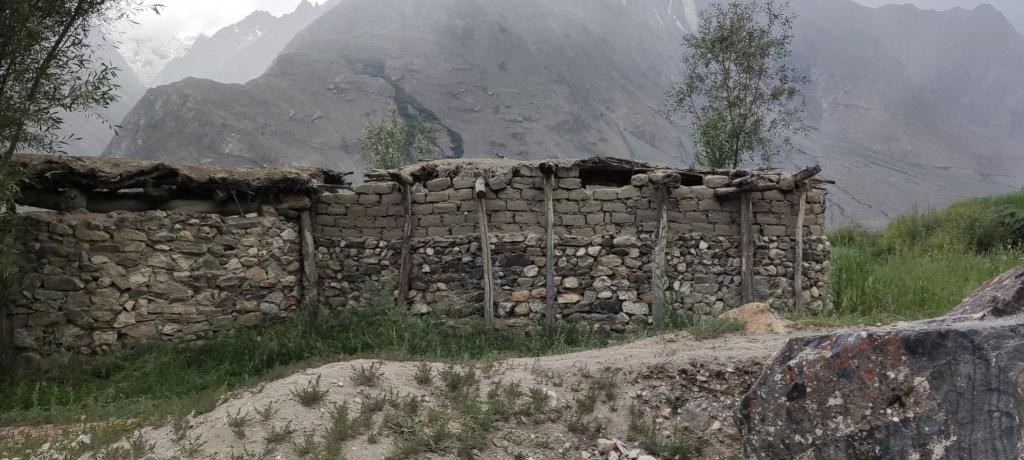


The real problems start only after Askola, where driving over the precipice it turns out that we have a broken part of the road, through which the waterfall now flows. We have to go through it on foot and get stuck in the mud above our ankles. For safety reasons, the car passes by without passengers and we continue our journey.


Already less than half an hour later we come across another damaged road, but this time it is at least several meters of missing surface, washed away by a rushing river. We are losing hope, because even crossing this route is very risky.
Dozens of people under the leadership of our Ghani are trying to move large boulders to create a makeshift path. After more than three hours of hard work in the mud and rain, they manage to create a narrow passage, allowing literally millimeters to squeeze our jeep, which is already leaning over the precipice.
We, in turn, have to cross the river to get to the other side.





After driving a track, we have to wait for the porters' car. It turns out that when we drove, part of the ride created collapsed again and they had to rebuild it once again. Fortunately, they did it in several minutes.
Before two in the morning, we stop for food in a restaurant without lights and by eating Chicken Karai with rice and Naan bread, we react to our previous adventures.
Then there were a few more minor situations, when we had to cross a river over a precipice or over a wooden bridge, where more than half of the boards were missing, but it did not matter much to us.
We get to our hotel in Skardu after five in the morning, i.e. after thirteen, instead of five or six hours of driving, enjoying the fact that we managed to survive.
Day 18: Skardu
We sleep for the first half of the first day and only go for a walk in the early afternoon. Skardu, despite many famous Himalayan celebrities visiting it, is not a tourist town and has retained its cultural colors in full, and you will not find typical tourist shops or restaurants here. Rather, stalls with street food and small, dive-looking pubs where Pakistani dine, a market, workshops for motorbikes and tire change points dominate. It is in vain to look for tourists here and it seems that we are the only ones here, but we feel very safe and people are extremely kind to us.






Our chef "Eggs Uncle" invites us to his home for the evening, so we have the opportunity to see what a traditional Pakistani household looks like. We are invited to the male part of the house, where there is a guest room. The other part of the house is for women only. The exception is the matrimonial bedroom where the spouses spend time together.
When entering the room, take off your shoes and sit down on the rug, leaning against the pouffes. The host spreads out a tablecloth in the middle of the rug and offers refreshments. Most often it is cake, fruit and tea. In the local culture, they are most often eaten on the floor.
The most important place in the room is, of course, the Koran, which is placed in the highest possible place, and you should wash your face and hands before taking it.
The meeting passes very pleasantly, but tiredness after an almost sleepless night takes its toll, so soon we return to the hotel to rest.

Day 19: Trip to the Kachura Lake
Today, apart from a trip to Lake Kachura, less than an hour from Skardu, passes us lazily. The fatigue of the material must have happened sometime and today is that day.
It takes about an hour to get to the lake. It is a very popular place here among Pakistani tourists. There are four foreign tourists and this is our group. There is a hotel and several eateries where guests drink Pakistani tea (it is tea with milk, salt and sugar). You can rent boats, kayaks and pedal boats at the lake. The rental costs about 2500 Pakistani rupees (about $ 15) for the entire boat, which is quite a high price, considering that you can dine in the city in a restaurant for 300-400 (about $ 3), and from the street for up to half the price.

















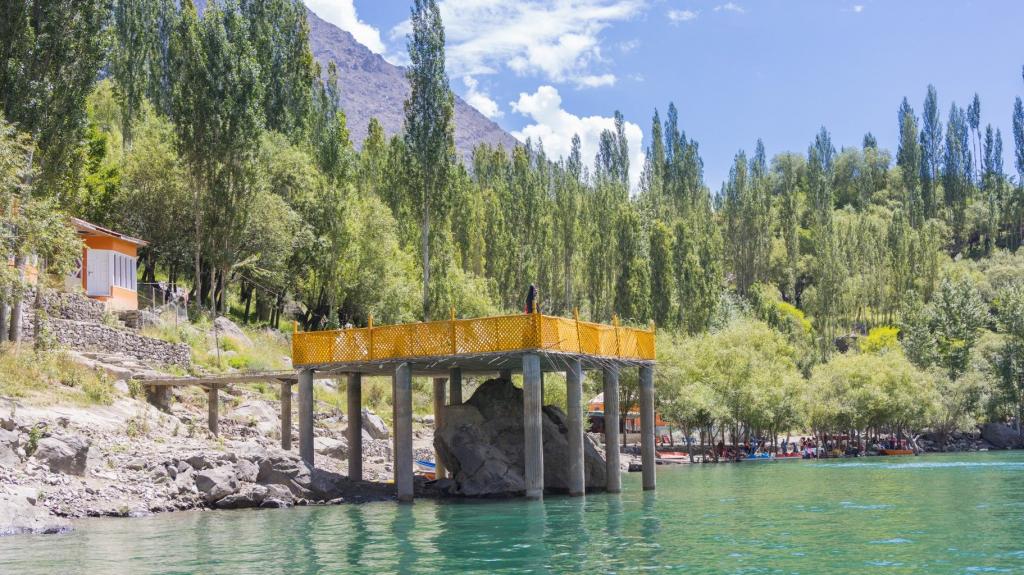





Today, the Mashabrum hotel where we stayed is full of Himalayan celebrities who have come down from the mountains and are getting ready to return to their homes. The climbing season is over. Some have been camping in base camps since June, waiting for an opportunity to conquer their mountain. Today at the hotel, Alex Txikon's group is celebrating the conquest of Gasherbrum III by distributing a cake to all the guests sitting at the tables. There is also Monika Witkowska, who flashed for a while in the hotel restaurant.
We also have a festive dinner at the end of a successful trip, because tomorrow morning we are flying to Islamabad.





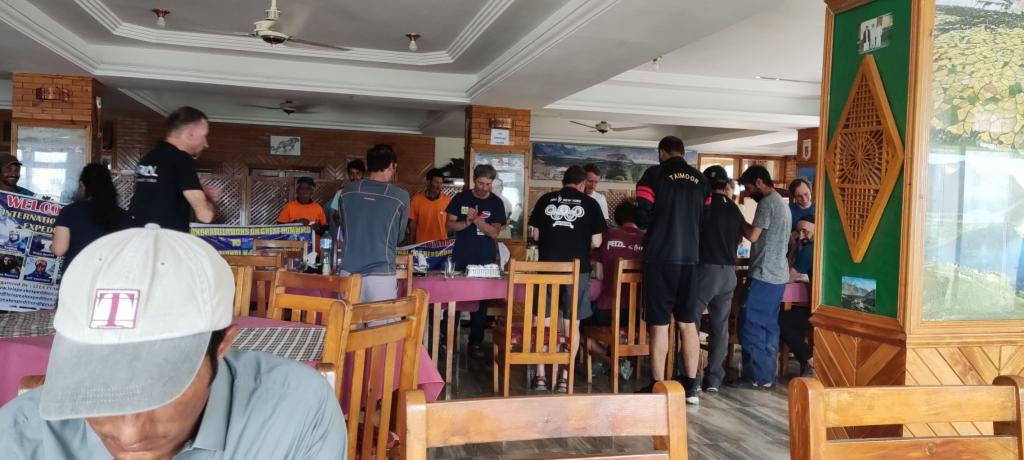
Day 20: Islamabad
We have a flight to Islamabad at nine o'clock in the morning. This time we have not canceled our flight anymore and we do not have to huddle for twenty-one hours on the Karakoram Highway, and we are in Islamabad in just over an hour. What a convenience!
At the Check Inn stand :) the gentlemen check our documents, and then all our large backpacks are weighed together in a pile on a huge scale, which, judging by its appearance, probably is much more than ours. After all that, all we have to do is wait on the sofas in the departures hall for a call.

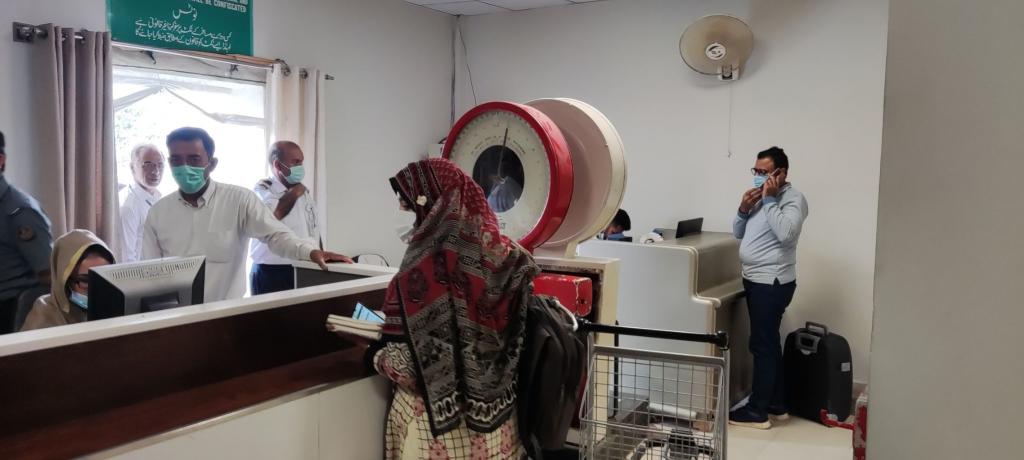




During the flight, we manage to see Nanga Parbat, which is gigantic even from this height! So, actually, we don't have to go trekking to the Nanga anymore;) I think that we will come back here in a few years.

We are in Islamabad after ten, from where Abbas, our contact on behalf of the agency, picks us up.
Testing on Covid is a priority, as we have 48 hours left before departure. While the procedure is fast and the test can be performed immediately for about $ 40 by paying with a card, it is worse with the test itself, because the lab technician drills through the nose to the brain, probably taking a sample of the cerebrospinal fluid.
We are expected to receive the test results by e-mail within six to eight hours.
Finally, the agency invites us to a famous restaurant in Islamabad for dinner, which is a very nice and unexpected gesture. The restaurant specializes in grilled or Karai-style mutton dishes. It is popular with both residents and tourists, hence two rooms - one with tables where tourists eat, and the other, where the residents sit on the carpet on the floor, which is something completely normal and obvious here.






The next point is the King Faisal Mosque, the sixth largest in the world. This modern mosque was built in 1986 by this Saudi king and cost one hundred and twenty million dollars. It can accommodate three hundred thousand believers.
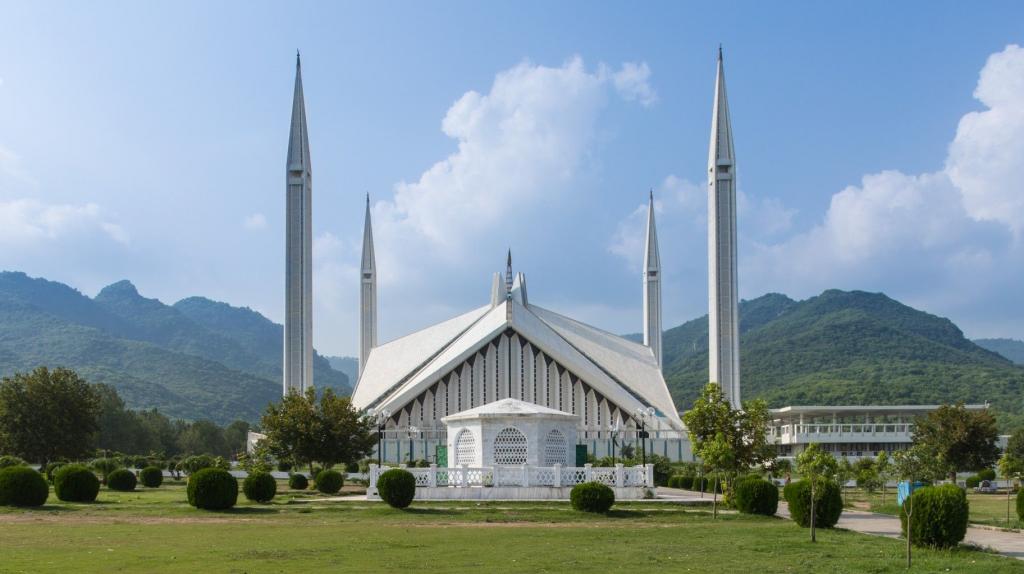




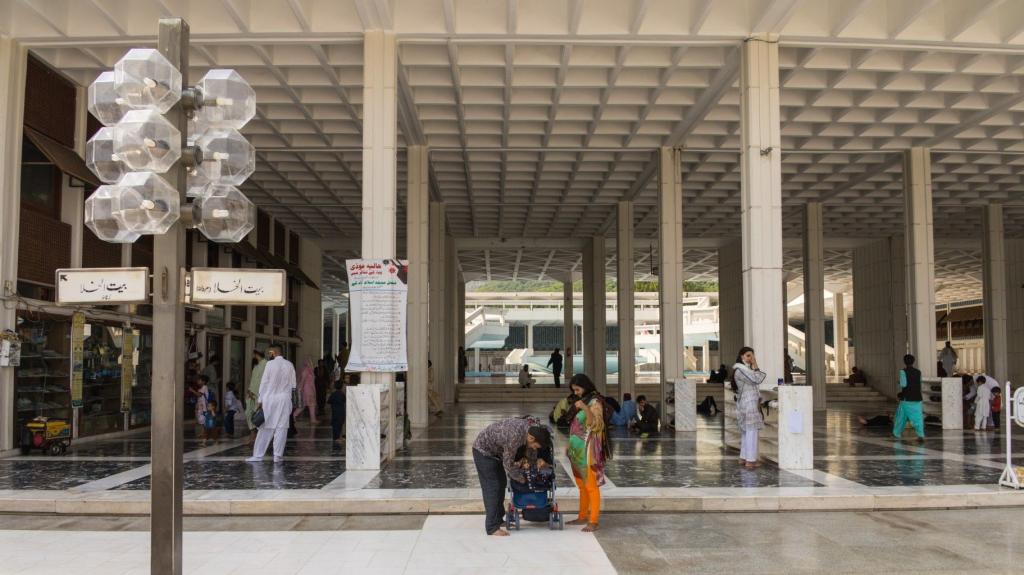

.jpeg)









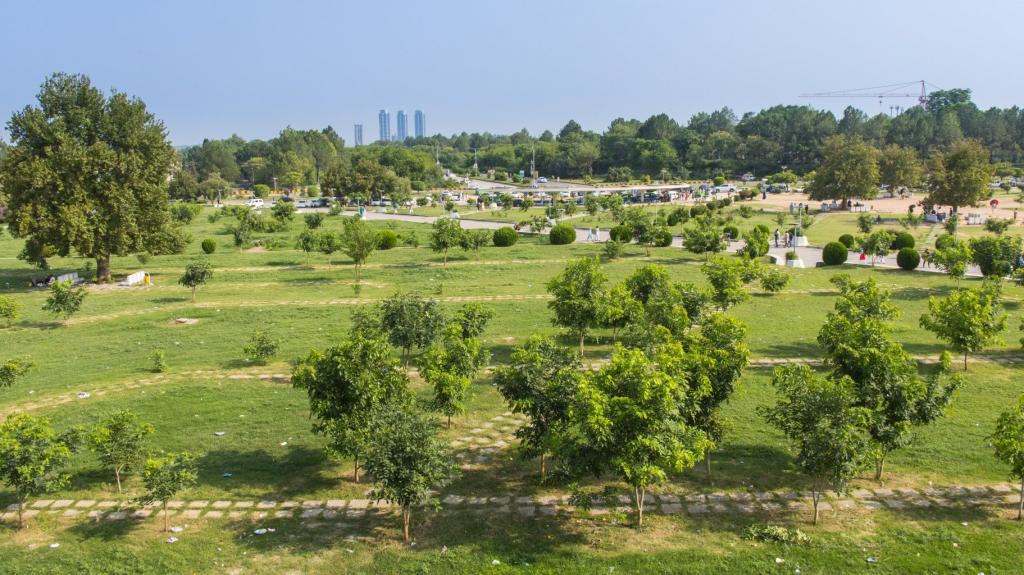


After the mosque, we visit the Daman-e-Koh park on a hill overlooking the entire city, where there is an amusement park, a whole lot of colorful fairs and a viewing platform from which you can see, among others the mosque I mentioned a moment ago, a few skyscrapers, and in good weather even a lake outside the city. Today, although the weather is good and it is hot, there is smog over the city, obstructing visibility, so it's best to go here fresh after the rain. There are many monkeys running around the park, but you have to be careful because they can be aggressive.

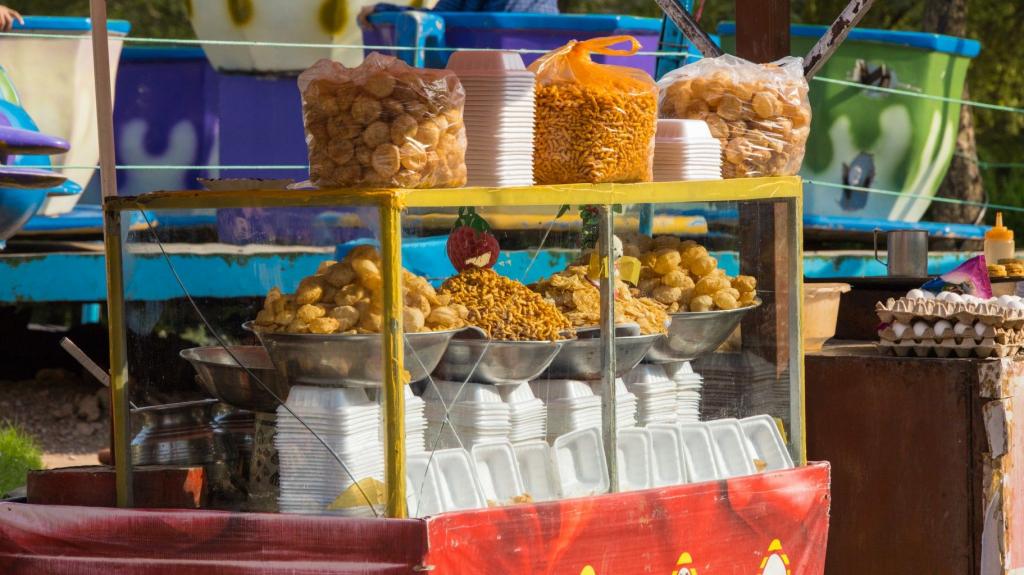





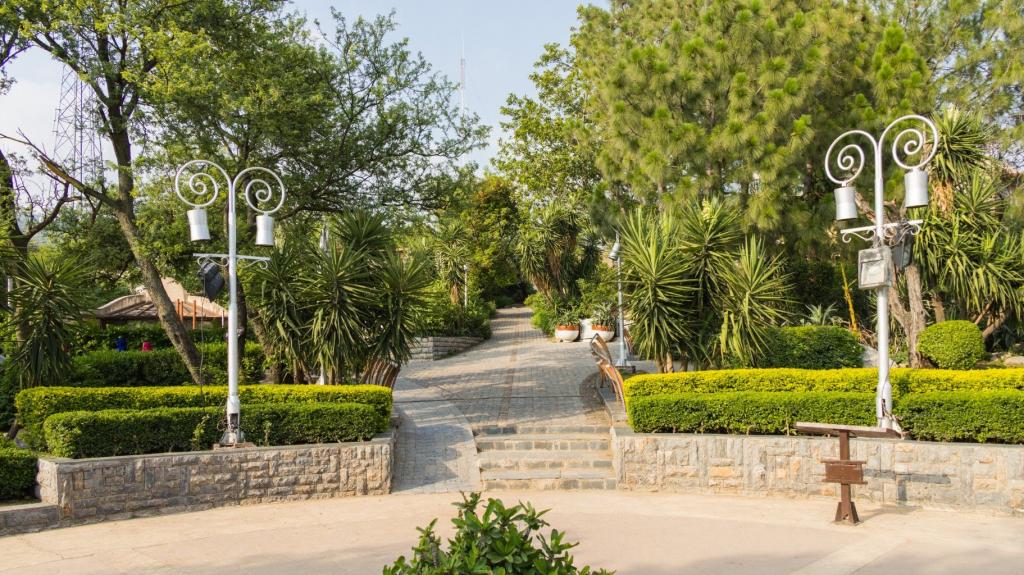

After dusk, we go back to the King Faisal mosque to see how it looks illuminated at night and we take a short photo session here, after which we go for food in a modern neighborhood of pubs, restaurants and fast-food restaurants, where it is quite European.

Day 21: Karachi
In the morning we have a surprise because our driver is late. It turns out that when I call him twenty minutes late, he answers in a sleepy voice, roused from his sweet sleep. Fortunately, it makes up for breaking local speed regulations and we easily reach the airport on time.
The flight itself takes about two hours and runs smoothly, apart from the fact that judging by the temperature on the plane, we are probably carrying frozen goods.
At the airport, a second driver is waiting for us to take us to the hotel.
The area where we are stopping strongly resembles India, and this typical Indian hustle and bustle and chaos, as well as motorbikes and Tuk-Tuk everywhere, become our new reality.
Nearly all shops and restaurants in the area are closed - as it turns out, due to the increasing number of infections with the Delta mutation.
The only open restaurant is Pizza Hut and a shop with the name “Seven Eleven” printed on a piece of paper, where all prices are at the seller's discretion, possibly also negotiable.
It is worth mentioning the adventure that happened to us. Well, we were so popular here that a rickety car stops in front of us, screeching tires, and a woman runs out to us. She claims to be a reporter for one of the local TV stations and that she would like to interview us. Armed with a camera in the form of a cell phone, she asks us to shout "Hello Subbhi" and raise our thumbs, then happily runs to the car and drives away.


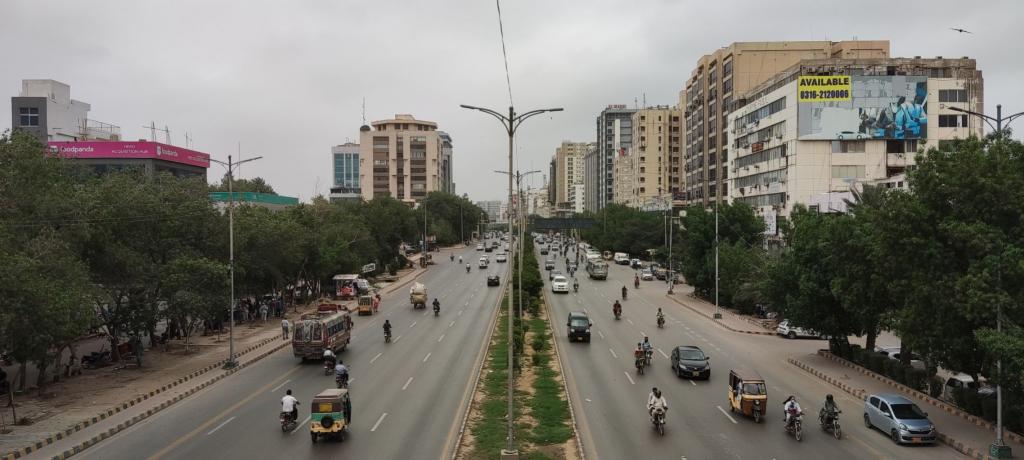

From the points we visited, namely Seaview Beach, Do Darya Viewpoint, Bagh Ibn-e-Qasim Park and Mohatta Palace, everything except the viewpoint was closed.
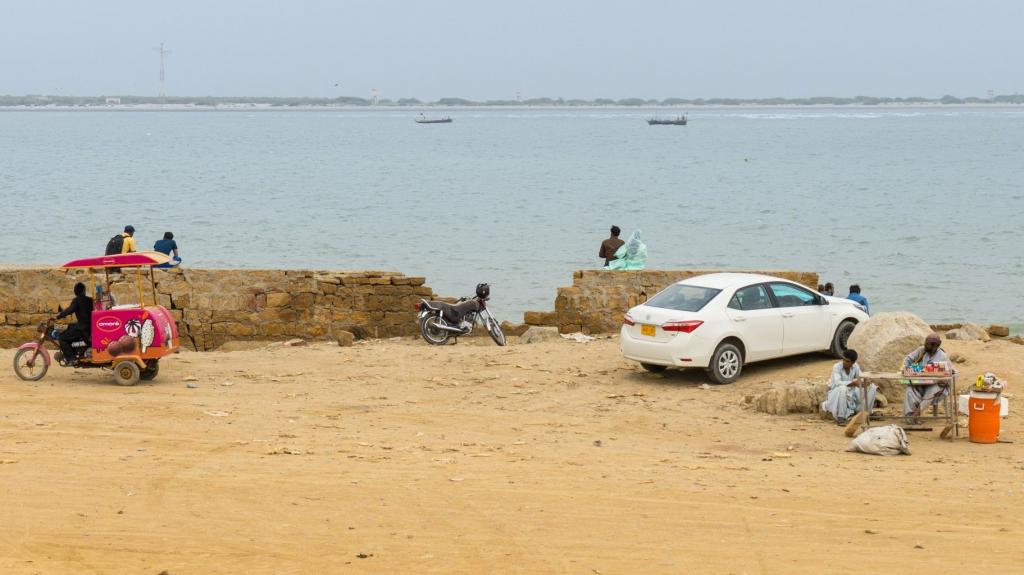






Unhappy with the closure of almost the entire city, we return to the hotel, where we spend the rest of the day.
We don't know if our flight will take place tomorrow. Today's flight was canceled and when trying to check in online on Turkish Airlines website, I get a message that our flight has been changed and I am asked to choose a new date or cancel my flight. At the same time, on the airport website and in the booking system, the flight is still marked as planned, and our colleague Magda from our group, due to her work in organizing flights, having access to the Amadeusz system, suspected that the flight is also marked as up-to-date in this system.
Well, it turns out tomorrow morning at the airport ...

Home Sweet Home
At the airport, it turns out that our flight will take place as planned.
When checking in, we have to show a pile of documents again, including both Covid's certificates and test results. Failure to have one of these documents precludes the possibility of travel, and such a situation happened to one woman who, despite pleading and crying, was dismissed empty-handed.
Karachi says goodbye to us with a poster supporting Kashmir ...

In Istanbul, at the airport, we no longer have any problems and after a few hours of waiting, we are already flying to Prague, where our trip ends.

Leave a Comment
Donate Projects
Transasia
I'm planning to publish a book about my trip through Asia and I need your help to achieve this goal.To donate Transasia, please click
See My Photos on
Share this Article
Tweet

